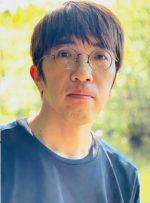 [ad_top1 class=””]
[ad_top1 class=””] 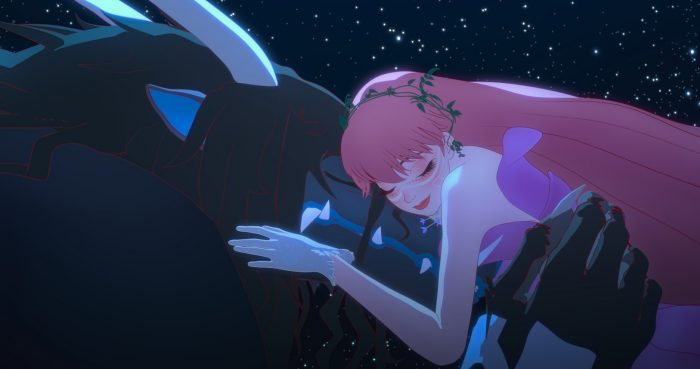 [sourceLink asin=””asin_jp=””bookwalker_id=””cdj_product_id=””text=”twitter”url=”https://twitter.com/studio_chizu/status/1413422681102315529?s=20&t=mV3HuGCNCh4Y9iAS1nZEVQ”]
[sourceLink asin=””asin_jp=””bookwalker_id=””cdj_product_id=””text=”twitter”url=”https://twitter.com/studio_chizu/status/1413422681102315529?s=20&t=mV3HuGCNCh4Y9iAS1nZEVQ”]
Anime-urile se află într-o lume a sa, iar genul este suficient de influent și frumos pentru a obține recunoaștere la nivel global, datorită viziunii neortodoxe a regizorilor japonezi. Și se dovedește că există mulți regizori incredibil de talentați, fiecare cu propriul stil de animație și de povestire distinct. Crearea unui anime uimitor necesită colaborarea multor profesioniști din industrie, inclusiv scenariști, actori vocali, producători, animatori, regizori și alții. Toate rolurile merită recunoaștere, dar este timpul să ne concentrăm pe regizori, în special pe cei mai buni regizori anime din toate timpurile. Așadar, iată o listă creată pentru a onora mințile care au mers dincolo și mai sus pentru a ne oferi divertisment de înaltă calitate.
[ad_top2 class=”mt40 mb40″]
10. Naoko Yamada
 [sourceLink asin=””asin_jp=””bookwalker_id=””cdj_product_id=””text=”imdb”url=”https://www.imdb.com/name/nm2210720/mediaviewer/rm1539527168?ref_=nm_ov_ph”] [information_general item1=”Opere notabile”content1=”K-On!, A Silent Voice, Sound! Euphonium, Tamako Market”post_id=””]
[sourceLink asin=””asin_jp=””bookwalker_id=””cdj_product_id=””text=”imdb”url=”https://www.imdb.com/name/nm2210720/mediaviewer/rm1539527168?ref_=nm_ov_ph”] [information_general item1=”Opere notabile”content1=”K-On!, A Silent Voice, Sound! Euphonium, Tamako Market”post_id=””]
Naoko Yamada s-a născut în Prefectura Kyoto în noiembrie 1984 și a crescut în Prefectura Gunma înainte de a se întoarce la Kyoto pentru a-și continua cariera artistică. Îi plăcea să deseneze în copilărie și imita frecvent imagini din seriale anime populare. Yamada, care a avut o fascinație de-a lungul vieții pentru filme, stătea trează până târziu să vadă orice se juca în slotul de seară. La Universitatea de Artă și Design din Kyoto, a studiat pictura în ulei și a fost membră a clubului de efecte speciale. În ciuda intențiilor ei de a urma o carieră în film după absolvire, ea a ajuns să obțină primul ei loc de muncă la Kyoto Animation, unde una dintre primele ei poziții a fost animarea între cadre pentru Inuyasha, difuzat atunci, înainte de a continua să anime pentru anime cum ar fi. ca Kanon, Lucky Star și Melancolia lui Haruhi Suzumiya. Ulterior, a fost promovată ca animator cheie pentru Osamu Dezaki’s Air, înainte de a lucra ca regizor de episod în Clannad. La scurt timp după, ea și-a făcut debutul în regia șefă cu K-On! în 2009, o adaptare a unei slice-of-life manga, care a continuat să fie un serial de mare succes-respingând un al doilea sezon și un film. În 2013, ea a regizat Tamako Market și a urmat-o cu filmul Tamako Love Story în 2014. Următorul proiect al lui Yamada, și cea mai populară lucrare a ei până în prezent, a fost adaptarea anime a manga A Silent Voice’, care a reflectat aspecte ale hărțuirii și fizicului. dizabilitate în Japonia. La 32 de ani, ea a fost una dintre cele mai tinere regizoare de nivel înalt din industrie, A Silent Voice fiind al treilea ei lungmetraj, l-a scos din apă pe Hayao Miyazaki din punct de vedere al vârstei (a debutat la 38 de ani) și încasând un total de 32 de ani. 2,3 miliarde ¥. Filmul s-a deschis pe locul 2 la Box Office japonez și a primit, de asemenea, mai multe nominalizări la premii, inclusiv cel mai bun film de animație la Mainichi Film Awards și Excelent Animation of the Year la Japan Academy Prize.
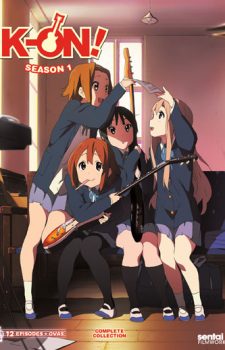 [sourceLink asin=””asin_jp=””cdj_product_id=””text=”sentai”url=””]
[sourceLink asin=””asin_jp=””cdj_product_id=””text=”sentai”url=””] 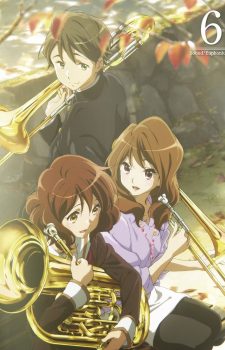 [sourceLink asin=””asin_jp=”B01LZMX2IO”cdj_product_id=””text=””url=””]
[sourceLink asin=””asin_jp=”B01LZMX2IO”cdj_product_id=””text=””url=””]
9. Tetsuro Araki
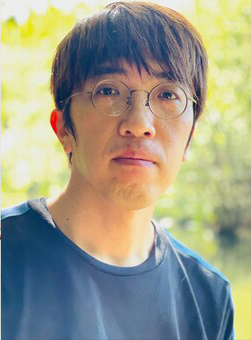 [sourceLink asin=””asin_jp=””bookwalker_id=””cdj_product_id=””text=”twitter”url=”https://twitter.com/ttr1976/status/1549079631893897217?s=20&t=wcRBWJH5PGapxayRBJH5PGapx ] [information_general item1=”Notă ble Works”content1=”Attack On Titan, Highschool of the dead, Death Note, Kabaneri of the Iron Fortress, Black Lagoon”post_id=””]
[sourceLink asin=””asin_jp=””bookwalker_id=””cdj_product_id=””text=”twitter”url=”https://twitter.com/ttr1976/status/1549079631893897217?s=20&t=wcRBWJH5PGapxayRBJH5PGapx ] [information_general item1=”Notă ble Works”content1=”Attack On Titan, Highschool of the dead, Death Note, Kabaneri of the Iron Fortress, Black Lagoon”post_id=””]
Tetsurō Araki ar putea fi unul dintre cele mai populare nume din industria anime-ului, mai ales având în vedere impresionanta lui listă de realizări. Născut pe 5 noiembrie 1976, în orașul Sayama, prefectura Saitama, Japonia. Nu se știu multe despre educația sa, cu excepția faptului că a devenit un tânăr bine rotunjit, talentat, cu un interes pentru arte. El a urmat Liceul Seibugakuenbunri înainte de a continua să studieze la Universitatea Senshu din Tokyo în cadrul Departamentului Umanitar. La scurt timp după absolvire, a obținut primul său loc de muncă la Madhouse Studio ca artist Storyboard/Director de episod, lucrând la Galaxy Angel, Panyo Panyo Di Gi Charat și Gungrave, înainte de a-și face în sfârșit debutul regizoral în Otogi-Jūshi Akazukin din 2005 (Fairy). Muschetari). Munca de regizor a lui Araki include nume populare precum Death Note, Highschool of the Dead și Kabaneri of the Iron Fortress, cu iconicul Attack on Titan transformându-l într-un nume de familie, ca povestea impecabilă a seriei, construirea lumii și capacitatea generală. pentru a prinde un observator rival chiar și pe cel mai bun dintre cei mai buni.
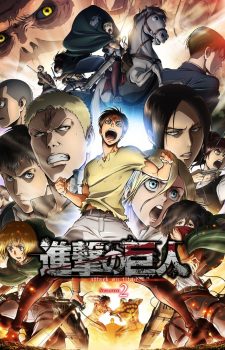 [sourceLink asin=””asin_jp=”B06XT226DZ”cdj_product_id=””text=””url=””]
[sourceLink asin=””asin_jp=”B06XT226DZ”cdj_product_id=””text=””url=””] 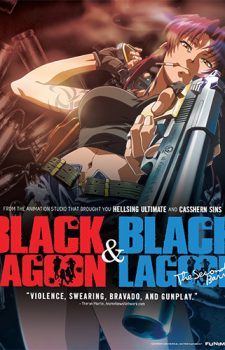 [sourceLink asin=”B008YRL7JE”asind_jp=”product”_cd_jp=”””text=””url=””]
[sourceLink asin=”B008YRL7JE”asind_jp=”product”_cd_jp=”””text=””url=””]
8. Makoto Shinkai
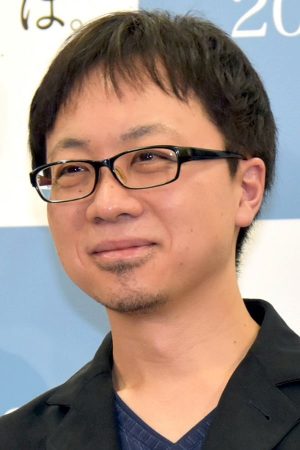 [sourceLink asin=””asin_jp=””bookwalker_id=””cdj_product_id=””text=”imdb”url=”https://www.imdb.com/name/nm1396121/?ref_=fn_al_nm_1″] [informații n_general item1=”Lucrări notabile”content1=”Numele tău., Weathering with you, Grădina cuvintelor, 5 centimetri pe secundă”post_id=””]
[sourceLink asin=””asin_jp=””bookwalker_id=””cdj_product_id=””text=”imdb”url=”https://www.imdb.com/name/nm1396121/?ref_=fn_al_nm_1″] [informații n_general item1=”Lucrări notabile”content1=”Numele tău., Weathering with you, Grădina cuvintelor, 5 centimetri pe secundă”post_id=””]
„Numele tău.” și „Weathering with You”. Ambele sunt filme absolut uimitoare, probabil două dintre cele mai populare filme anime ale acestui deceniu, cu strălucirea vizuală artistică și intrigile captivante, ambele regizate de același bărbat: Makoto Shinkai. Animatorul, regizorul, autorul și artistul manga japonez s-a născut pe 9 februarie 1973, în Koumi, Japonia. S-a specializat în literatură japoneză la Universitatea Chuo, unde a participat și la clubul de literatură juvenilă și a ilustrat cărți ilustrate. Dragostea lui pentru creație poate fi urmărită din manga, anime și romane la care a fost expus în școala gimnazială, filmele sale anime preferate fiind Laputa: Castle in the Sky, Nausicaä și The Castle of Cagliostro și The End of Evangelion. După ce a absolvit universitatea în 1996, a lucrat câțiva ani la o companie de jocuri video (Falcom) realizând clipuri video pentru jocuri, împreună cu design grafic și alt conținut online. Odată cu lansarea animației video originale „She and Her Cat” în 1999, el a câștigat în cele din urmă recunoașterea ca regizor de film. Shinkai și-a început îndelungata asociere cu CoMix Wave Films cu OVA de science-fiction Voices of a Distant Star în 2002, urmată de lungmetrajul său de debut The Place Promised in Our Early Days (2004). Al doilea lungmetraj al lui Shinkai, antologia dramă romantică „5 Centimeters per Second” (2007), a fost bine primit de critici, la fel ca și lansările sale ulterioare, și anume „Children Who Chase Lost Voices” (2011) și „Grădina cuvintelor”. (2013). Romantismul său fantastic „Numele tău”. lansat în 2016, a fost un succes critic și comercial, devenind al treilea film anime cu cele mai mari încasări din toate timpurile. Weathering with You, filmul său din 2019, a fost, de asemenea, un succes critic și comercial, iar al șaselea film al său, Suzume no Tojimari, urmează să fie lansat în noiembrie 2022. Înclinația sa de a amesteca genurile într-un întreg artistic, coerent este una dintre elementele cheie. stiluri care l-au ajutat să devină un nume cunoscut. De atunci, el a produs și regizat o serie de filme apreciate de critici, dintre care multe includ povești despre iubire și viață despre maturitate.
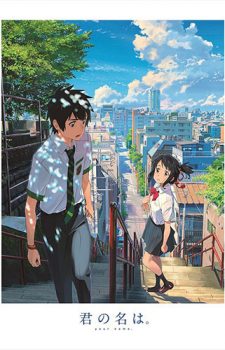 [sourceLink asin=””asin_jp=””cdj_product_id=”TBR-27261D”text=””url=””]
[sourceLink asin=””asin_jp=””cdj_product_id=”TBR-27261D”text=””url=””] 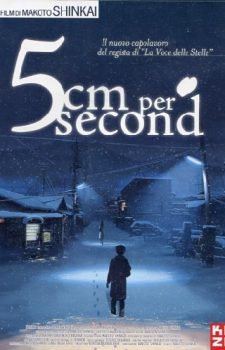 [sourceLink asin=””asin_jp=”B00423BIRA”cdj_product_id=””text=””url=””]
[sourceLink asin=””asin_jp=”B00423BIRA”cdj_product_id=””text=””url=””]
7. Hideaki Anno
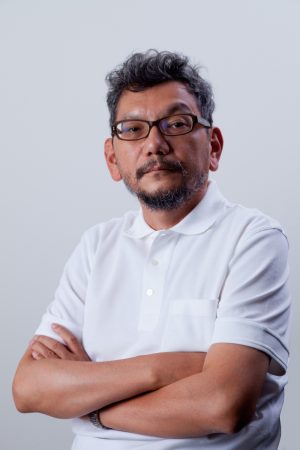 [sourceLink asin=””asin_jp=””bookwalker_id=””cdj_product_id=””text=”imdb”url=”https://www.imdb.com/name/nm0030417/mediaviewer/rm991175168?ref_=nm_ov_ph”] [informații_ite general m1=”Notable Works”content1=”Neon Genesis Evangelion: The End of Evangelion, Evangelion: 1.0: You Are (Not) Alone”post_id=””]
[sourceLink asin=””asin_jp=””bookwalker_id=””cdj_product_id=””text=”imdb”url=”https://www.imdb.com/name/nm0030417/mediaviewer/rm991175168?ref_=nm_ov_ph”] [informații_ite general m1=”Notable Works”content1=”Neon Genesis Evangelion: The End of Evangelion, Evangelion: 1.0: You Are (Not) Alone”post_id=””]
Anno și-a început cariera ca animator pentru seria anime „The Super Dimension Fortress Macross’în timp ce studia la Universitatea de Arte din Osaka. El a încetat să-și plătească școlarizarea după ce s-a implicat în producerea animațiilor de deschidere DAICON III și IV împreună cu colegii săi, precum și în realizarea de filme autofinanțate și, în cele din urmă, a fost exclus de la Universitatea de Arte din Osaka. Apoi și-a luat următorul loc de muncă ca animator, lucrând la Nausicaa of the Valley of the Wind pentru Hayao Miyazaki, care a fost atât de impresionat de talentul său încât i-a cerut să deseneze unele dintre cele mai complicate scene aproape de sfârșitul filmului. The iconic anime series Neon Genesis Evangelion, and Hideoki Annos’s most successful body of work, was a genuine phenomenon in and of itself, eliciting such an extraordinary response that anime fans are still dealing with the aftershocks and implications of today. Evangelion has become inextricably linked to the life of its creator, Hideaki Anno, and the arc of coming to terms with his (and the audience’s) lifelong struggles with depression and alienation, and how they frequently lead us to seek refuge and withdraw into inner landscapes of the imagination.
 [sourceLink asin=”B000244FRS”asin_jp=””cdj_product_id=””text=””url=””]
[sourceLink asin=”B000244FRS”asin_jp=””cdj_product_id=””text=””url=””] 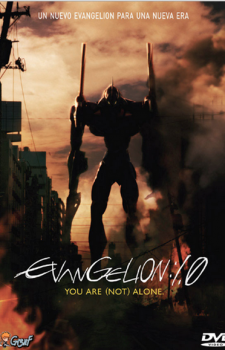 [sourceLink asin=”B002KYIAJ2″asin_jp=””cdj_product_id=””text=””url=””]
[sourceLink asin=”B002KYIAJ2″asin_jp=””cdj_product_id=””text=””url=””]
6. Shinichirō Watanabe
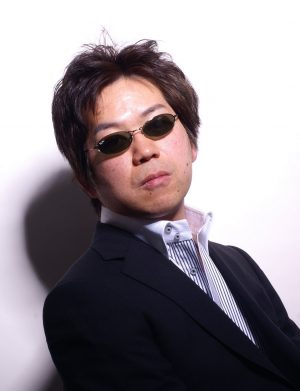 [sourceLink asin=””asin_jp=””bookwalker_id=””cdj_product_id=””text=”imdb”url=”https://www.imdb.com/name/nm0913860/mediaviewer/rm3904790272?ref_=nm_ov_ph”] [information_general item1=”Notable Works”content1=”Cowboy Bebop, The Animatrix, Blade Runner Black Out 2022, Samurai Champloo”post_id=””]
[sourceLink asin=””asin_jp=””bookwalker_id=””cdj_product_id=””text=”imdb”url=”https://www.imdb.com/name/nm0913860/mediaviewer/rm3904790272?ref_=nm_ov_ph”] [information_general item1=”Notable Works”content1=”Cowboy Bebop, The Animatrix, Blade Runner Black Out 2022, Samurai Champloo”post_id=””]
Shinichirō Watanabe, born May 24, 1965, in Kyoto is a Japanese anime television and film director, best known for directing the critically acclaimed and commercially successful anime series Cowboy Bebop and Samurai Champloo. Watanabe began his career as a storyboard artist at Japan’s Sunrise studio before earning the title of co-director on the company’s second instalment in their giant robot anime franchise,”Macross Plus,”which mesmerised audiences with its deft blend of traditional animation and early computer-generated imagery when it was released in 1994. Later, he was given creative control over a project of his choosing, and the result was”Cowboy Bebop,”a genre-bending cartoon cocktail influenced by both film noir and spaghetti Westerns. The show’s music and fast-paced editing style also alluded to American jazz. The series and its feature-length sequel were a resounding hit. Watanabe’s name became synonymous with cutting-edge adult animation, and his following project was”The Animatrix,”a collection of animated shorts inspired by the hugely influential sci-fi film”The Matrix”from the 1990s. Watanabe directed two of the nine parts, adding to his already impressive portfolio of animated work. He went on to direct another unpredictable anime series,”Samurai Champloo,”a hip-hop-infused historical farce set in feudal Japan. Since then, he has produced and directed several critically acclaimed films, including Kids on the Slope (Sakamichi no Apollon), a coming-of-age story about jazz musicians.
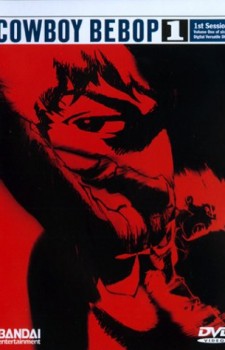 [sourceLink asin=”6305789312″asin_jp=””cdj_product_id=””text=””url=””]
[sourceLink asin=”6305789312″asin_jp=””cdj_product_id=””text=””url=””] 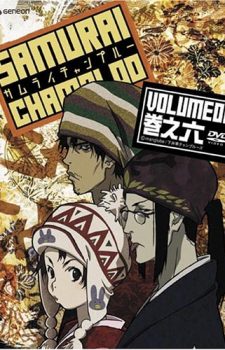 [sourceLink asin=”B000AC7OP2″asin_jp=””cdj_product_id=””text=””url=””] [ad_middle class=”mt40 mb40″]
[sourceLink asin=”B000AC7OP2″asin_jp=””cdj_product_id=””text=””url=””] [ad_middle class=”mt40 mb40″]
5. Masaaki Yuasa
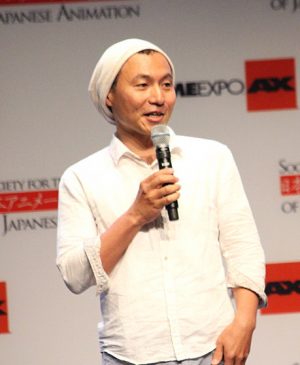 [sourceLink asin=””asin_jp=””bookwalker_id=””cdj_product_id=””text=”imdb”url=”https://www.imdb.com/name/nm1482702/mediaviewer/rm3551482624?ref_=nm_ov_ph”] [informatio n_general item1=”Notable Works”content1=”Tatami Galaxy, DevilMan Crybaby, Pingpong: The Animation”post_id=””]
[sourceLink asin=””asin_jp=””bookwalker_id=””cdj_product_id=””text=”imdb”url=”https://www.imdb.com/name/nm1482702/mediaviewer/rm3551482624?ref_=nm_ov_ph”] [informatio n_general item1=”Notable Works”content1=”Tatami Galaxy, DevilMan Crybaby, Pingpong: The Animation”post_id=””]
Masaaki Yuasa, a cult favourite in Japanese animation, is known for his ever-shifting visual style and experimentation with a distinct directorial voice that has worked in a wide range of genres. Born in Japan’s Fukuoka Prefecture in 1965, he developed an early interest in drawing. He was particularly taken with the anime art style, but he thought it would be silly for him to work as an animator when he grew up because the animation was primarily intended for children. After obtaining a fine arts degree at Kyushu Sangyo University, he’d pursue a career in animation soon after graduating, initially at the Ajia-do studio where he worked as an animation director on the long-running”Shin Chan”and later as an animator and key animator on the show’s many spin-offs. In 2004, with over a decade of animation experience under his belt, Yuasa directed his first feature, the animated action-adventure film”Mind Game”(2004). Gaining increasing acclaim for his unconventional approaches to narrative, he would go on to write, direct, and storyboard the mini-series ‘The Tatami Galaxy’ (2010) as well as the acclaimed action short ‘Kick Heart’ (2013). Aside from his vivid and ever-changing use of colour, the most distinctive quality of Yuasa’s flexible style is how he constantly emphasises flatness in his animation, deliberately avoiding photorealism in favour of explicit cartoonishness. His talents were honoured in the United States when in 2014, he was invited to write, direct, storyboard, and animate an episode of the beloved animated series”Adventure Time”titled”Food Chain.”Yuasa would continue to present his own unique vision on screen, writing and directing the feature ‘Lu Over the Wall’ (2017), but he remained active in collaborative efforts as well, storyboarding the Netflix anime series ‘Devilman: Crybaby’.
 [sourceLink asin=”B00J5S09OK”asin_jp=””cdj_product_id=””text=””url=””]
[sourceLink asin=”B00J5S09OK”asin_jp=””cdj_product_id=””text=””url=””] 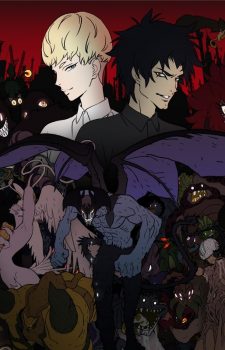 [sourceLink asin=””asin_jp=””cdj_product_id=”ANZX-14231″text=””url=””]
[sourceLink asin=””asin_jp=””cdj_product_id=”ANZX-14231″text=””url=””]
4. Satoshi Kon
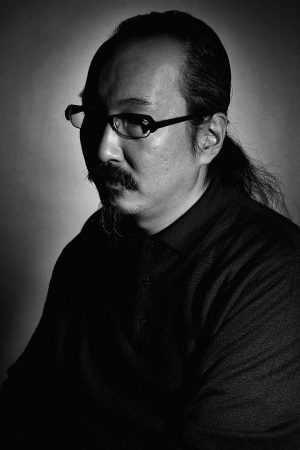 [sourceLink asin=””asin_jp=””bookwalker_id=””cdj_product_id=””text=””url=”https://www.imdb.com/name/nm0464804/mediaviewer/rm3697617408?ref_=nmmi_mi_all_pbl_1″] [information_ general item1=”Notable Works”content1=”Perfect Blue, Paprika, Tokyo Godfathers, Millennium Actress”post_id=””]
[sourceLink asin=””asin_jp=””bookwalker_id=””cdj_product_id=””text=””url=”https://www.imdb.com/name/nm0464804/mediaviewer/rm3697617408?ref_=nmmi_mi_all_pbl_1″] [information_ general item1=”Notable Works”content1=”Perfect Blue, Paprika, Tokyo Godfathers, Millennium Actress”post_id=””]
In the world of Japanese animation, few names are as significant as the late Satoshi Kon, the mind behind such influential films as Perfect Blue, Paprika, and others that left an artistic and deep impression in the anime world. He was born in Hokkaido on October 12, 1963, and was first encouraged to pursue a career in animation while attending Hokkaido Kushiro Koryo High School, where inspiration from classic anime such as Space Battleship Yamato and Mobile Suit Gundam encouraged him to try his hand at animation himself. Studying as a graphic designer at Musashino Art University in 1982, it was during his time at college that the filmmaker came second in the 10th Annual Tetsuya Chiba Awards, debuting his manga short Toriko. After graduating, Kon realised he wanted to pursue a career in manga writing, an obsession that led him to pursue filmmaking in the 1990s, gravitating toward anime. His work culminated in his directorial debut, the anime adaptation of Yoshikazu Takeuchi’s novel Perfect Blue, a suspense film with themes of the blurring border between reality and fantasy, which he wrote for the 1995 anthology film Memories. Satoshi Kon’s name became well-known in the anime industry as a result of the film’s critical and commercial success. Many filmmakers have been directly influenced by Satoshi Kon’s work, and the director is frequently underappreciated for his contributions to the development of such projects. In addition to Black Swan and Requiem for a Dream, Christopher Nolan’s sci-fi thriller Inception, starring Leonardo DiCaprio and Elliot Page, borrowed several ideas from Kon’s trippy 2006 masterpiece, Paprika. Kon was tragically diagnosed with terminal pancreatic cancer. Given half a year to live, he chose to spend the rest of his life at home, where his final message was posted on his blog, saying goodbye to his devoted fans before passing away on August 24, 2010, at the age of 46. He was later mentioned among the Fond Farewells in TIME Magazine’s people of the year in 2010.
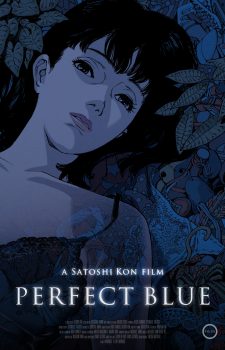 [sourceLink asin=””asin_jp=””cdj_product_id=””text=”imdb”url=”https://www.imdb.com/title/tt0156887/mediaviewer/rm1887136512?ref_=ttmi_mi_all_pos_10″]
[sourceLink asin=””asin_jp=””cdj_product_id=””text=”imdb”url=”https://www.imdb.com/title/tt0156887/mediaviewer/rm1887136512?ref_=ttmi_mi_all_pos_10″] 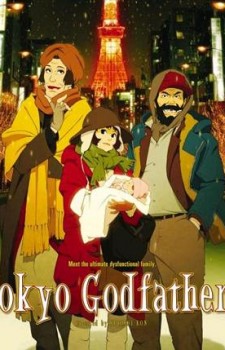 [sourceLink asin=”B0001EFTVA”asin_jp=””cdj_product_id=””text=””url=””]
[sourceLink asin=”B0001EFTVA”asin_jp=””cdj_product_id=””text=””url=””]
2. Mamoru Hosoda
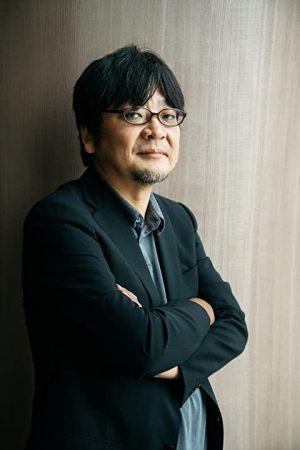 [sourceLink asin=””asin_jp=””bookwalker_id=””cdj_product_id=””text=””url=”https://www.imdb.com/name/nm0396074/mediaviewer/rm1836143616?ref_=nm_ov_ph”] [information_general item1=”Notable Works”content1=”The Girl Who Leapt Through Time, Summer Wars, Wolf Children, One Piece films”post_id=””]
[sourceLink asin=””asin_jp=””bookwalker_id=””cdj_product_id=””text=””url=”https://www.imdb.com/name/nm0396074/mediaviewer/rm1836143616?ref_=nm_ov_ph”] [information_general item1=”Notable Works”content1=”The Girl Who Leapt Through Time, Summer Wars, Wolf Children, One Piece films”post_id=””]
Mamoru Hosoda is a Japanese animator who was born in Kamiichi, Toyama, on September 19, 1967. Hosoda studied oil painting at the Kanazawa College of Art before beginning his career at Toei Animation, where he worked as a key animator on projects from popular anime franchises such as”Dragon Ball Z,””Yu Yu Hakusho,”and”Sailor Moon”throughout the 1990s. Hosoda made his directorial debut in 1999 with the short film”Digimon Adventure,”an animated adaptation of the virtual pet toy similar to the massive”Pokemon”franchise. This short led to Hosoda’s role as an occasional director on episodes of”Digimon: Digital Monsters”. It also led to Hosoda’s first feature-length film,”Digimon: The Movie”(2000). He was subsequently hired to direct Studio Ghibli’s ultimately well-received film”Howl’s Moving Castle”(2004), but was let go ( Hayao Miyazaki, the most famous anime director, eventually directed the film). Hosoda left Toei for Madhouse, another animation studio, where he began a new chapter in his career. He directed”The Girl Who Leapt Through Time”(2006) and”Summer Wars”(2009), both critically acclaimed and successful films before leaving Madhouse in 2011 to form his own company, Studio Chizu with Madhouse producer Yuichiro Saito. He co-produced his next film,”Wolf Children,”which received even more acclaim than the one before it, but”The Boy and the Beast”was the project that raised Hosoda’s international profile as an animation auteur more than any other. That is, until his next film,”Mirai”, received nearly universal acclaim and a Best Animated Feature nomination at the 91st Academy Awards in 2019. His latest film, Belle (2021) received just as many accolades, grossing ¥6.53 billion at the box office and receiving 16 nominations (and winning two) including 5 Annie Award nominations, surpassing the record held by previous films Spirited Away, Millennium Actress, and Weathering with You (2019) with four each.
 [sourceLink asin=””asin_jp=””cdj_product_id=”KABA-2401″text=””url=””]
[sourceLink asin=””asin_jp=””cdj_product_id=”KABA-2401″text=””url=””] 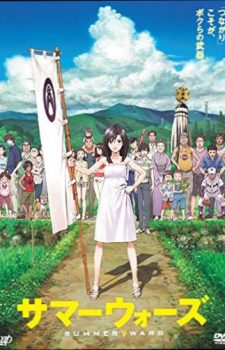 [sourceLink asin=””asin_jp=””cdj_product_id=”VPBT-14443″text=””url=””]
[sourceLink asin=””asin_jp=””cdj_product_id=”VPBT-14443″text=””url=””]
3. Katsuhiro Otomo
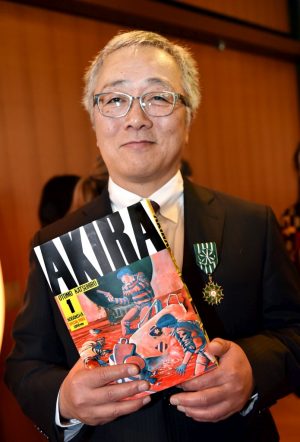 [sourceLink asin=””asin_jp=””bookwalker_id=””cdj_product_id=””text=””url=”https://www.imdb.com/name/nm0960028/mediaviewer/rm1412838656?ref_=nm_ov_ph”] [information_general item1=”Notable Wo rks”content1=”Akira, Steamboy”post_id=””]
[sourceLink asin=””asin_jp=””bookwalker_id=””cdj_product_id=””text=””url=”https://www.imdb.com/name/nm0960028/mediaviewer/rm1412838656?ref_=nm_ov_ph”] [information_general item1=”Notable Wo rks”content1=”Akira, Steamboy”post_id=””]
As one of the most prolific writers and animators of either medium, the master creator is hailed amidst his contemporaries for his revolutionary manga-turned-movie, Akira. His other works moreover, however lesser-known, only help to prove his world-annihilating genius and combustible graphic style-with inclusions that, while faltering to hit the colossal heights of Akira, have nevertheless changed the landscapes of manga and anime forever. Born in Japan’s northeast region of Tohoku, in the city of Tome-gun located in Miyagi Prefecture, Katsuhiro Otomo grew up miles away from anything remotely capturing the gargantuan cityscapes of many of his works. A lover of film with a penchant for animation, Otomo spent many of his weekends travelling to the city of Sendai to catch the latest pictures. He published his debut work, a manga adaptation of Prosper Merimee’s short novel Mateo Falcone, called A Gun Report. His most famous work was Akira, a critically acclaimed manga he created between 1982 and 1990. The work consisted of over 2000 pages of artwork and took a long time to draw, but once the movie was released, it quickly gained fame as one of the best-animated movies of all time, credited with elevating anime to never-before-attained heights. Otomo has achieved even greater heights than the awards that his works have received, however, as he has managed to become a decorated Chevalier of the French Ordre des Arts et des Lettres in 2005. He was later promoted to Officer of the order in 2014. Apart from these, he has also been inducted into the American Eisner Award Hall of Fame in 2012 and the 2016 Grand Prix de la Ville d’Angoulême, becoming the first manga artist in history to receive the prestigious award. Artists influenced by him and his work include Hisashi Eguchi, Naoki Urasawa, Naoki Yamamoto, Hiroya Oku, and the infamous Masashi Kishimoto, the author of Naruto.
 [sourceLink asin=””asin_jp=””cdj_product_id=”PIBA-1268″text=””url=””]
[sourceLink asin=””asin_jp=””cdj_product_id=”PIBA-1268″text=””url=””] 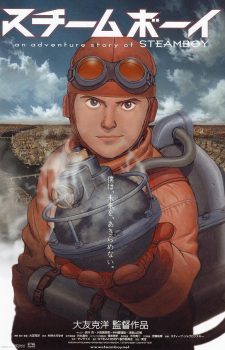 [sourceLink asin=””asin_jp=””cdj_product_id=”BCBA-2145″text=””url=””]
[sourceLink asin=””asin_jp=””cdj_product_id=”BCBA-2145″text=””url=””]
1. Hayao Miyazaki
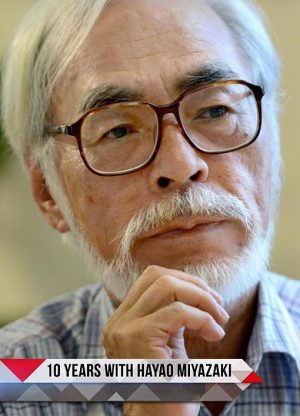 [sourceLink asin=””asin_jp=””bookwalker_id=””cdj_product_id=””text=””url=”https://www.imdb.com/title/tt12221602/mediaviewer/rm2062070017/?ref_=tt_ov_i”] [information_general item1=”Notable Works”content1=”Sp irited Away, Castle in the Sky, The Wind Rises, My Neighbour Totoro”post_id=””]
[sourceLink asin=””asin_jp=””bookwalker_id=””cdj_product_id=””text=””url=”https://www.imdb.com/title/tt12221602/mediaviewer/rm2062070017/?ref_=tt_ov_i”] [information_general item1=”Notable Works”content1=”Sp irited Away, Castle in the Sky, The Wind Rises, My Neighbour Totoro”post_id=””]
Hayao Miyazaki-Regarded as Japan’s preeminent animator and director, Hayao Miyazaki has remained a cult figure among”manga”and”anime”fans. Although he is officially retired, his works have become so prolific that even people who are unfamiliar with anime can recognize his work. This has made Miyazaki a respected director not only in Japan but all over the world. Born January 5, 1941, in the Bunkyō ward of Tokyo, Miyazaki expressed interest in manga and animation from an early age, and he joined Toei Animation in 1963. He began his career as an in-between artist at Toei Animation and later collaborated with director Isao Takahata. Toei’s credits include Doggie March, Gulliver’s Travels Beyond the Moon, Puss in Boots, and Animal Treasure Island before moving to A-Pro in 1971, where he co-directed Lupin the Third Part I with Takahata. In 1985, he co-founded Studio Ghibli, where he directed a number of films, including Castle in the Sky (1986), My Neighbour Totoro (1988), Kiki’s Delivery Service (1989), and Porco Rosso (1990). These films were critical and commercial successes in Japan and around the world, with’Princess Mononoke’being the first animated film ever to win the Japan Academy Prize for Picture of the Year, and briefly becoming the highest-grossing film in Japan before his 2001 film Spirited Away became the highest-grossing film in Japanese history, winning the Academy Award for Best Animated Feature at the 75th Academy Awards, and is frequently ranked among the greatest animated films ever. Later projects such as Howl’s Moving Castle (2004), Ponyo (2008), and The Wind Rises (2013) also enjoyed critical and commercial success. His style as a director is quite unique, since he is a purist of some sort, preferring to use traditional animation over the use of CGI. In fact, it has been reported that he does not allow any more than 10% of any work he is doing to be computer-generated. Nonetheless, his works have won numerous awards. Spirited Away, in particular, was so well-received that it won Best Animated Feature at the 75th Academy Awards. But that’s not all; at the 87th Academy Awards, Miyazaki became the fourth person to receive the rare and prestigious Academy Honorary Award from the Academy of Motion Picture Arts and Sciences (AMPAS), one of only four animators to do so, joining Chuck Jones, Walter Lantz, and Walt Disney.
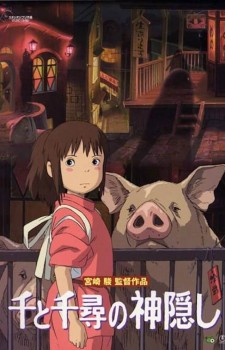 [sourceLink asin=””asin_jp=””cdj_product_id=”NEOBK-1916005″text=””url=””]
[sourceLink asin=””asin_jp=””cdj_product_id=”NEOBK-1916005″text=””url=””]  [sourceLink asin=”B00MHT49TK”asin_jp=””cdj_product_id=””text=””url=””]
[sourceLink asin=”B00MHT49TK”asin_jp=””cdj_product_id=””text=””url=””]
Final Thoughts
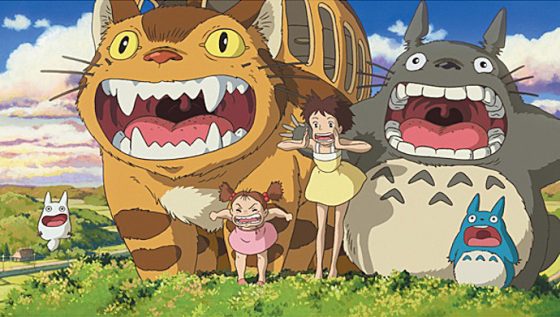 [sourceLink asin=””asin_jp=”B008AGZQW8″cdj_product_id=””text=””url=””]
[sourceLink asin=””asin_jp=”B008AGZQW8″cdj_product_id=””text=””url=””]
So concludes our list of the best minds behind the most notable anime produced over the years. Without these directors, anime would most likely not be as popular as it is now, hence why we believe these ten special directors are deserving of a lot of praise from the anime community.
[author author_id=””author=”Ahmad Animasaun”translator_id=””] [ad_bottom class=”mt40 mb40″] [en]Original Article Below[/en][es]Versión anterior[/es]  [sourceLink url=”http://www.pixiv.net/member_illust.php?mode=medium&illust_id=39382950″ a_text=”Yoshiyuki Tomino Anime Fan Art”]
[sourceLink url=”http://www.pixiv.net/member_illust.php?mode=medium&illust_id=39382950″ a_text=”Yoshiyuki Tomino Anime Fan Art”]
Behind each iconic scene in the history of anime lies a person serving as the architect for the opus being created. Anime directors may not be as famous as the works that they create, but without them or their talents, anime will not be as prolific as it is today. Directors are a breed of their own. With a unique insight that specifically sees the exact dynamics of a story as it is supposed to be told, they manage to create classics that touch the viewers, creating an industry that has stood strong for decades, and one which continues to grow every day. And thus, this list has been created to honor the minds that broke barriers, crushed boundaries, and pursued horizons farther than any art form has ever achieved before. Here are the top ten anime directors!
10. Satoshi Kon
[imageCharacterWithAnime character=’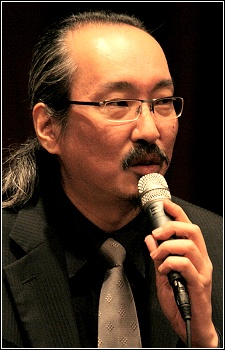 ‘]
‘]
Notable Works: Perfect Blue, Paprika Hailing from Hokkaido, Satoshi Kon has created his mark in the anime world with anime creations that were both artistic and deep. He was first encouraged to pursue a career in animation while attending Hokkaido Kushiro Koryo High School, where inspiration from classic anime like Space Battleship Yamato and Mobile Suit Gundam encouraged him to try out animation himself. He became a manga artist when he went to college, eventually moving up to anime in the years to follow. He worked as a supervisor for Mamoru Oshii’s Patlabor 2: The Movie along with anime films. However, his work finally reached its pinnacle in his directorial debut, the anime adaptation of Yoshikazu Takeuchi’s novel Perfect Blue, a suspense film with themes of the blurring border between reality and fantasy. The film was a critical and commercial success, and made Satoshi Kon’s name notable in the anime industry. Tragedy is said to love the genius however, as he was eventually diagnosed with a terminal case of pancreatic cancer while working on his film, The Dreaming Machine. He passed away six months after the initial diagnosis, shocking the anime community and the world since he has not shown any sign of sickness prior to him being diagnosed with cancer. He was later mentioned among the Fond Farewells in TIME Magazine’s people of the year in 2010.
[imageCharacterWithAnime character=’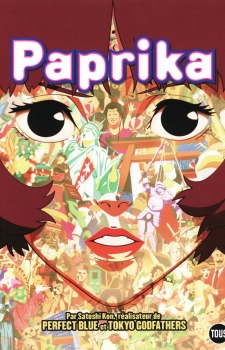 ‘anime=’
‘anime=’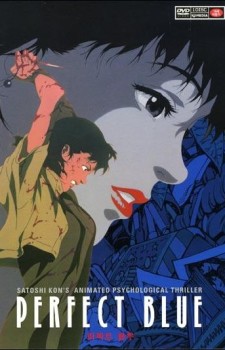 ‘]
‘]
9. Noboru Ishiguro
[imageCharacterWithAnime character=’ ‘]
‘]
Notable Works: Space Battleship Yamato, The Super Dimension Fortress Macross Noburo Ishiguro is one of those names in the anime industry that has influenced the anime world from backstage. Born in August 24, 1938, he came to this world prior to the start of the Second World War. Despite this, however, he grew into a well-rounded, talented young man with an interest in the arts. One of the really cool things about Noburo Ishiguro is the fact that he was into music while he was growing up. In fact, he was part of a Hawaiian style music band in his youth. This background in music eventually influenced his style in anime, as his ability to read sheet music and proficiency in musical notes helped one of the themes he chose to explore in his anime opus, The Super Dimensional Fortess Macross. In fact, this proficiency in music became his mark in later movies such as The Super Dimension Fortress Macross: Do You Remember Love? and Legend of the Galactic Heroes. He sadly passed away on March 20, 2012, however, due to a lung infection which was the result of a follow-up procedure to a surgery that treated an aneurysm two years prior. He was 73 when he passed away.
[imageCharacterWithAnime character=’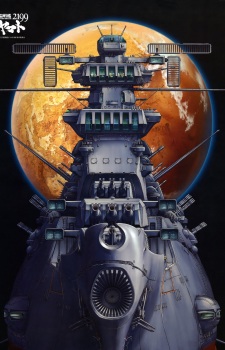 ‘anime=’
‘anime=’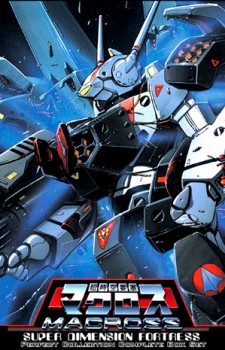 ‘]
‘]
8. Shinichirō Watanabe
[imageCharacterWithAnime character=’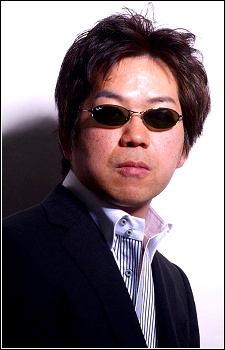 ‘]
‘]
Notable Works: Cowboy Bebop, Samurai Champloo Born in Kyoto, Japan, Watanabe has quickly gained fame after joining the animation company Sunrise. Starting his work as a co-director and storyboard supervisor of the well-received to the Marcross update, Macross Plus, he eventually moved up to full directorial duties as the director of 1998 series Cowboy Bebop, which received universal praise was considered by critics and anime viewers as one of the greatest anime series of all time. Among the key styles that made him into a household name is his propensity to mix genres into an artistic, coherent whole. For example, in Cowboy Bebop, he blended elements from classic cowboy Western, Film Noir, Jazz/Blues music, Hong Kong cinema styles, and classic space opera. In his later work, Samurai Champloo, he mixes elements from Okinawa culture, hip-hop, modern-day Japan, and chanbara. He was tied to a live-action adaptation of his most well-known work, Cowboy Bebop, in 2009. However, he the project eventually went on hiatus. He has since produced and directed other acclaimed works such as Kids on the Slope (Sakamichi no Apollon), a coming of age story about Jazz musicians.
[imageCharacterWithAnime character=’ ‘anime=’
‘anime=’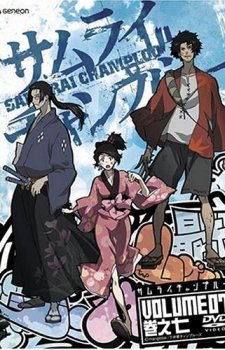 ‘]
‘]
7. Hideaki Anno
[imageCharacterWithAnime character=’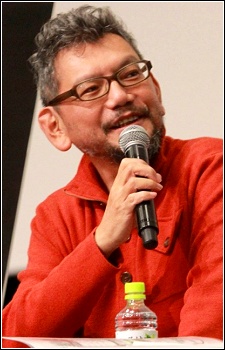 ‘]
‘]
Notable Works: Neon Genesis Evangelion: The End of Evangelion, Evangelion: 1.0: You Are (Not) Alone Hideaki Anno got his start as an animator working for Hayao Miyazaki’s Nausicaa of the Valley of the Wind in 1984. Since Studio Ghibli was running short on animators during that time, the production studio posted an ad in Animage, a popular Japanese animation magazine. Anno headed down to the studio and showed Hayao Miyazaki his drawings. Impressed, Miyazaki assigned him as an animator for the intricate sequences involving the God Warriors. Anno’s directorial work in the iconic anime series Neon Genesis Evangelion has made him into a household name, as the series’ philosophical depth and religious undertones touched areas never breached by anime before. As a director, Anno usually draws from his own experiences, such as his long bout of depression being one of the inspirations behind the End of Evangelion. He has since established himself as one of the founding members of the animation studio Gainax, which creates groundbreaking and daring anime. In early 2006 however, he has left Gainax to create his own animation studio, Khara. Describing himself as the prodigal son of Hayao Miyazaki, he has become one of the most respected anime directors in the world today. In fact, he even has an asteroid named after him, 9081 Hideakianno. Now that’s breaking new ground.
[imageCharacterWithAnime character=’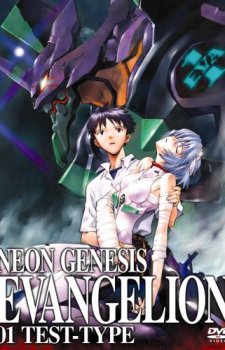 ‘anime=’
‘anime=’ ‘]
‘]
6. Isao Takahata
[imageCharacterWithAnime character=’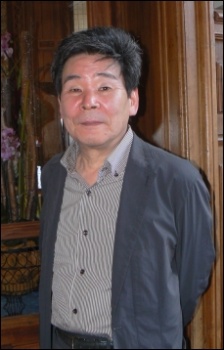 ‘]
‘]
Notable Works: Grave of the Fireflies, The Tale of the Princess Kaguya Isao Takahata is one of the names in the anime world that fosters great respect and reverence. Being a longtime friend and collaborative partner of Hayao Miyazaki, Takahata is also co-founder of Studio Ghibli, most possibly the most notable anime company in the world. Graduating from a the University of Tokyo with a degree in French Literature, he was inspired to enter the anime industry after watching a cartoon adaptation of Le Roi et l’Oiseau (The King and the Mockingbird), which is based on a fairy tale by Hans Cristian Andersen. He eventually joined Toei Animation, which started his career as one of the greatest anime directors in the world, adapting literary classics and creative adaptations into anime form. Known best for the anti-war film that made moviegoers go out of movie theaters in tears, Grave of the Fireflies, Takahata’s work has been found to carry influences of Italian Neorealism, Jacques Prévert, as well as French New Wave films during the 1960s. His work also carries influences in Expressionistic art, as shown in his films Omohide Poro Poro, and his another one of his acclaimed works, Horus: Price of the Sun. His most recent film is yet another critically acclaimed work, The Tale of Princess Kaguya, which was nominated for Best Animated Feature Film at the 87th Academy Awards.
[imageCharacterWithAnime character=’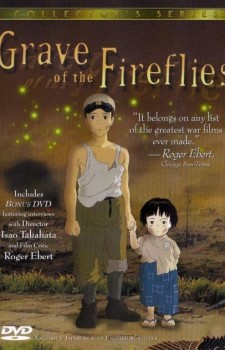 ‘anime=’
‘anime=’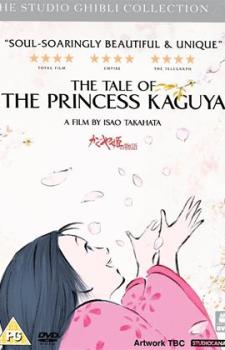 ‘]
‘]
5. Mamoru Oshii
[imageCharacterWithAnime character=’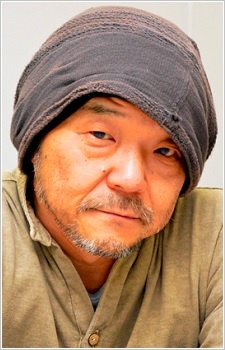 ‘]
‘]
Notable Works: Ghost in the Shell,: Patlabor 2:The Movie Mamoru Oshii has created a name for himself with his most notable work, the 1995 anime film Ghost in the Shell, a story of a female cyborg trying to find the meaning of her existence. The depth of the story, as well as it’s the artistic direction of the anime has made it universally-acclaimed, making it the first anime to reach the top of the US Billboard video charts in 1996 and is widely considered as a masterpiece and anime classic. Oshii’s influences lie in European cinema, especially films by Federico Fellini, Ingmar Bergman, Michelangelo Antonioni, and Jean-Pierre Melville, Jean-Luc Godard, Andrei Tarkovsky and Jerzy Kawalerowicz. His works usually carry a significant amount of symbolism, which ranges from known archetypes to biblical references such as those found in his work, Angel’s Egg and Avalon. His works have helped elevate anime to new heights, reaching levels and audiences that the art form was not able to breach into before. Though he occasionally dabbles in live-action movies, his animated works are what made him into an international name. The Wachowskis, famous for the Matrix Trilogy, have openly cited Oshii as one of their influences in creating their sci-fi masterpiece, to the point of showing Oshii’s Ghost in the Shell to their producer in order to show them the type of film they wanted the Matrix to be like. James Cameron, famous for the two highest grossing movies of all time, Titanic and Avatar, has also been open about his admiration for Oshii’s work, stating that Avalon may be”the most artistic, beautiful and stylish sci-fi film”ever to grace the animated screen, and that Ghost in the Shell was”the first truly adult animation film to reach a level of literary and visual excellence.”
[imageCharacterWithAnime character=’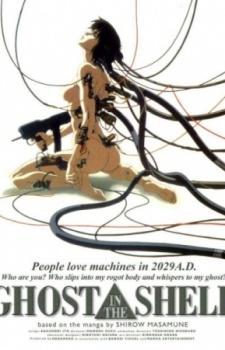 ‘anime=’
‘anime=’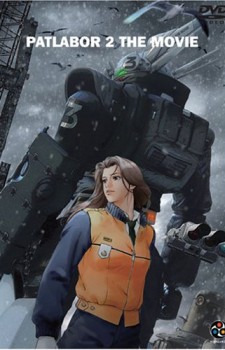 ‘]
‘]
4. Yoshiyuki Tomino
[imageCharacterWithAnime character=’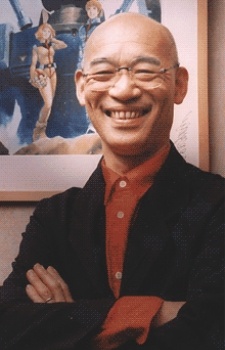 ‘]
‘]
Notable Works: Mobile Suit Gundam, Brain Powerd Known as the man behind the Gundam franchise, Yoshiyuki Tomino started his career under Mushi Productions, the company behind the world’s first Japanese anime series, Astro Boy. Tomino worked under Osamu Tezuka, writing storyboards and the screenplay for a number of episodes of the iconic series. However, Tomino is best known for single-handedly pushing the mecha genre to new heights. With his realistic approach to mecha as machines that are rooted in science, his trailblazing series, Mobile Suit Gundam reinvented the mecha genre and started a trend that is to stand until this day. Though the initial run of Mobile Suit Gundam was pulled out of the airwaves due to low ratings, its eventual rediscovery after a series of animated movies triggered a worldwide phenomenon, eventually making Tomino into a world-famous director. What makes Yoshiyuki Tomino even more awesome is the fact that his talents in anime do not stop in directing. Apart from creating great series and directing them with a style and depth unrivalled in the anime industry, he has also created music for anime, even collaborating with anime music greats such as Yoko Kanno, Asei Kobayashi, MIO and Neil Sedaka.
[imageCharacterWithAnime character=’ ‘anime=’
‘anime=’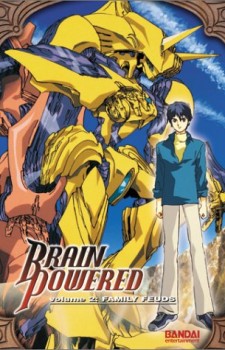 ‘]
‘]
3. Katsuhiro Otomo
[imageCharacterWithAnime character=’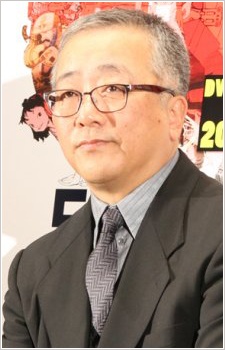 ‘]
‘]
Notable Works: Akira, Steamboy Yet another anime director whose works have triggered worldwide fame, Katsuhiro Otomo grew up with a fascination with movies. It is widely known that while growing up, he was so enamored with movies that he would unhesitatingly travel for three hours during school holidays just to see them. After graduating from high school, he pursued his dreams of becoming a manga artist. Soon after, he published his debut work, a manga adaptation of Prosper Merimee’s short novel Mateo Falcone, called A Gun Report. His magnum opus would be another manga that he would pen in the early 1980’s, his critically-acclaimed work, Akira. The work took years to complete and culminated in over 2000 pages of artwork. Once released however, it quickly gained fame as one of the best animated movies of all time, credited for elevating anime to heights never before reached. Even world-famous movie critic Roger Ebert picked Akira as his Video Pick of the Week in 1989, giving it a “Thumbs Up” rating. It has also garnered very favorable reviews from film site Rotten Tomatoes, which has given it a “Fresh” rating since it was included in the site’s list. Otomo has achieved even greater heights than the awards that his works have received, however, as he has managed to become a decorated Chevalier of the French Ordre des Arts et des Lettres in 2005. He was laterpromoted to Officier of the order in 2014. Apart from these, he has also been inducted into the American Eisner Award Hall of Fame in 2012 and the 2016 Grand Prix de la ville d’Angoulême, becoming the first manga artist in history to receive the prestigious award.
[imageCharacterWithAnime character=’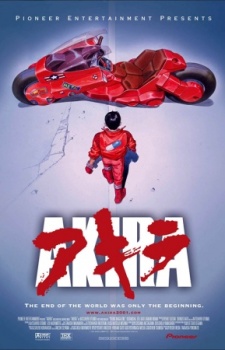 ‘anime=’
‘anime=’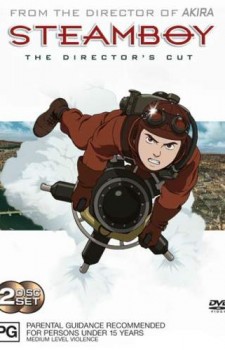 ‘]
‘]
2. Osamu Tezuka
[imageCharacterWithAnime character=’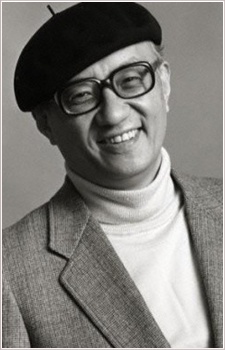 ‘]
‘]
Notable Works: Astroboy, Black Jack Regarded by many as the “God of Manga,” Osamu Tezuka is the man who is perhaps the one person that anime can truly credit as the one who started it all. Born in 1928, Tezuka initially set out to become a medical doctor. What’s really remarkable is the fact that he did become one, graduating from the University of Nara with a dissertation about the structural membrane of sea nails. After earning his M.D. however, he decided to focus on manga instead. He cites Walt Disney as one of his greatest influences, though he was known to disagree with the commercialism that Disney embraced. He is best known as the man behind the first anime to ever be produced, Tetsuwan Atom, better known in the West as Astro Boy. Though the series experienced heavy editing when it was brought to the West, it was nonetheless embraced by the populace. He would later create other notable series such as Kimba the White Lion, which, ironically is believed by many to be an inspiration to one of Walt Disney’s most successful films, The Lion King. Another work, Adolph, touches on themes prevalent among Jews and Germans in World War II, as the story tells of the two friends torn between duty and friendship amidst the horrific, turbulent period. Tezuka was a very efficient artist, known for being able to create up to ten pages of manga in a single day. His work in Astro Boy also earned him the admiration of Stanley Kubrick, who invited him to be the art director of the sci-fi classic 2001: A Space Odyssey. But Tezuka’s greatness not only lay in his work as an artist. When one looks into his roots, greatness also lies there, since Osamu Tezuka is also a known descendant of Hattori Hanzo, a famous ninja and samurai.
[imageCharacterWithAnime character=’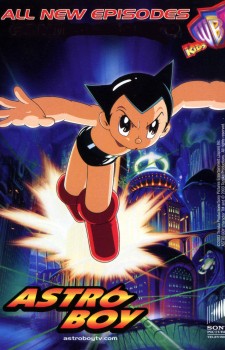 ‘anime=’
‘anime=’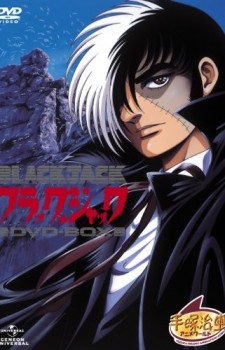 ‘]
‘]
1. Hayao Miyazaki
[imageCharacterWithAnime character=’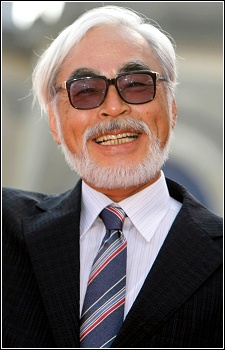 ‘]
‘]
Notable Works: Spirited Away, Howl’s Moving Castle Hayao Miyazaki is one anime director that continues to impress the world until today. Though officially retired, his works have become so prolific, to the point where people who are not familiar with anime can still recognize his work. This has made Miyazaki into a director that has become respected not only in Japan or the USA, but all over the world. His style as a director is quite unique, since he is a purist of some sorts, preferring to use traditional animation over the use of CGI. In fact, it has been reported that he does not allow any more than 10% of any work he is doing to be computer-generated. His characters are also notable, usually featuring a young female lead that can only be described as feminist. Overall, his works, as well as the acclaim his works have garnered throughout the years, have given him the moniker the “Walt Disney of Japan.” Even though Miyazaki states that he hates the title, it is nonetheless a testament to how great his work is considered by the people who adore him. His works have garnered numerous awards and universal critical acclaim, most especially Spirited Away, which has garnered a 97% “Fresh” rating from film site Rotten Tomatoes. It was so well-received, the movie won the Best Animated Feature in the 75th Academy Awards. So yes, Hayao Miyazaki has an Ocscar. But this is not all, for in the 87th Academy Awards, Miyazaki has become the fourth person to receive the rare and prestigious Academy Honorary Award from the Academy of Motion Picture Arts and Sciences (AMPAS). He is one of only four animators to receive this award, the other three being Walt Disney, Walter Lantz (creator of Woody Woodpecker), and Chuck Jones (animator of Bugs Bunny and Tom and Jerry).
[imageCharacterWithAnime character=’ ‘anime=’
‘anime=’ ‘]
‘] 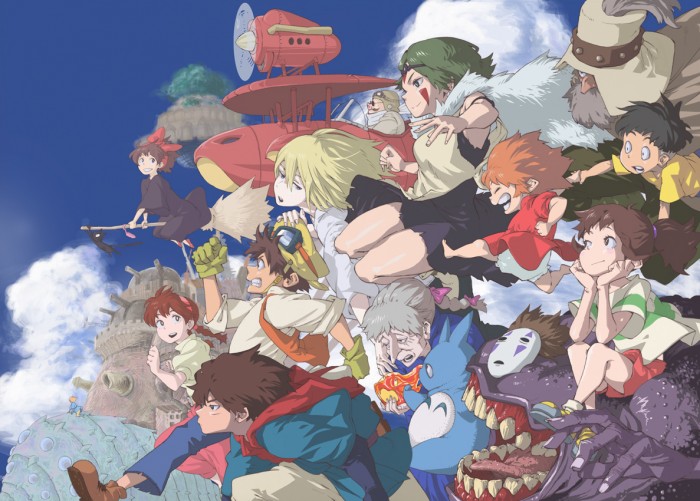 [sourceLink url=”http://www.pixiv.net/member_illust.php?mode=medium&illust_id=31271293″ a_text=”Hayao Miyazaki Anime Fan Art”]
[sourceLink url=”http://www.pixiv.net/member_illust.php?mode=medium&illust_id=31271293″ a_text=”Hayao Miyazaki Anime Fan Art”]
And so ends our list of the best minds behind the most notable anime that have been created through the years. Without these directors, anime would probably not be as prolific as it is today. So yes, I believe these ten special directors deserve a load of recognition from the anime community. After all, after their creative touch, anime has never been the same.
[author author=’Peter”Virage”de Jesus’author_id=”012″] [recommendedPost post_id=’51251’url=”title=”img=”class=”] [recommendedPost post_id=’127824’url=”title=”img=”class=”widget_title=”] [recommendedPost post_id=’257451’url=”title=”img=”class=”widget_title=”]

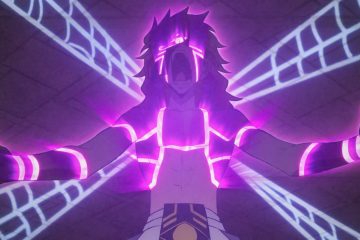
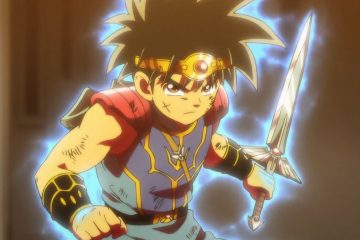

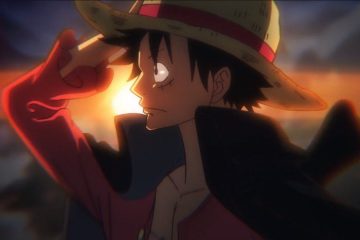

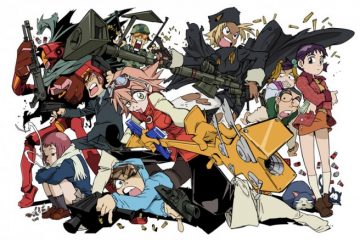
 [ad_top1 class=””]
[ad_top1 class=””] 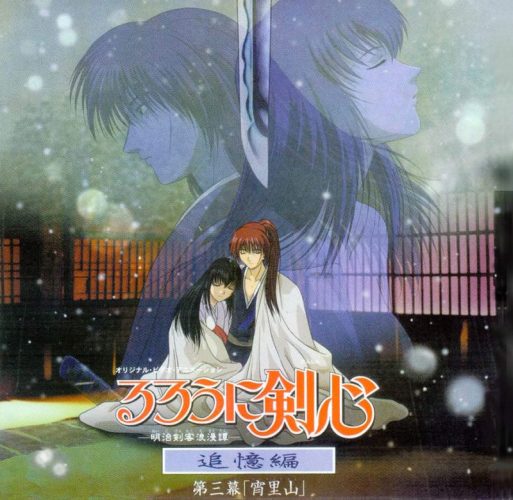 [sourceLink asin=””asin_jp=””bookwalker_id=””cdj_product_id=””text=”imdb”url=”https://www.imdb.com/title/tt0203082/mediaviewer/rm2951813120 ?ref_=ttmi_mi_all_pos_49″]
[sourceLink asin=””asin_jp=””bookwalker_id=””cdj_product_id=””text=”imdb”url=”https://www.imdb.com/title/tt0203082/mediaviewer/rm2951813120 ?ref_=ttmi_mi_all_pos_49″] 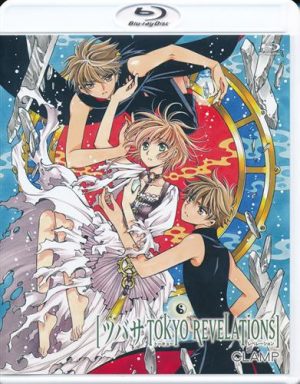 [sourceLink asin=””asin_jp=”B082XXQ125″bookwalker_id=””cdj_product_id=””text=””url=””] [Episoade informative=”3″difuzate=”din noiembrie 2007 până în martie 2008″post_id=””]
[sourceLink asin=””asin_jp=”B082XXQ125″bookwalker_id=””cdj_product_id=””text=””url=””] [Episoade informative=”3″difuzate=”din noiembrie 2007 până în martie 2008″post_id=””] 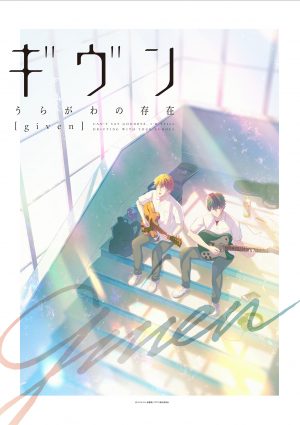 [sourceLink asin=””asin_jp=””bookwalker_id=””cdj_product_id=””text=”twitter”url=”https://twitter.com/dear_plus_/status/1397397109750439941?s=20&t=r3eWCbSqfZ2ItvjoaupGgg”] [Episoade informative=”1″difuzat=”Decembrie 2021″post_id=””]
[sourceLink asin=””asin_jp=””bookwalker_id=””cdj_product_id=””text=”twitter”url=”https://twitter.com/dear_plus_/status/1397397109750439941?s=20&t=r3eWCbSqfZ2ItvjoaupGgg”] [Episoade informative=”1″difuzat=”Decembrie 2021″post_id=””] 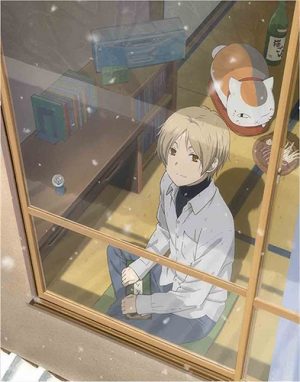 [sourceLink asin=””asin_jp=”B00FGTB2WK”bookwalker_id=””cdj_product_id=””text=””url=””] [Episoade de informații=”1″difuzat=”februarie 2014″post_id=””]
[sourceLink asin=””asin_jp=”B00FGTB2WK”bookwalker_id=””cdj_product_id=””text=””url=””] [Episoade de informații=”1″difuzat=”februarie 2014″post_id=””] 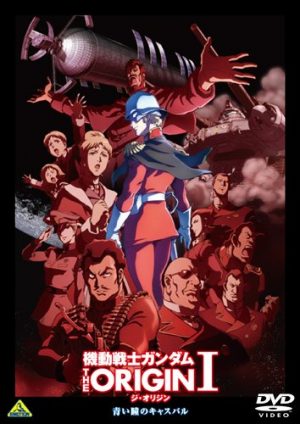 [sourceLink asin=””asin_jp=”B00Q9VX3AS”bookwalker_id=””cdj_product_id=””text=””url=””] [Episoade de informații=”6″aired=”din februarie 2015 până în martie 2018″post_id=””]
[sourceLink asin=””asin_jp=”B00Q9VX3AS”bookwalker_id=””cdj_product_id=””text=””url=””] [Episoade de informații=”6″aired=”din februarie 2015 până în martie 2018″post_id=””]  [sourceLink asin=”B00C94WQCU”asin_jp=””bookwalker_id=””cdj_product_id=””text=””url=””] [Episoade informative=”26″difuzate=”din martie 2012 până în octombrie 2013″post_id=””]
[sourceLink asin=”B00C94WQCU”asin_jp=””bookwalker_id=””cdj_product_id=””text=””url=””] [Episoade informative=”26″difuzate=”din martie 2012 până în octombrie 2013″post_id=””] 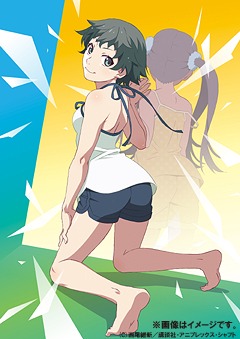 [sourceLink asin=””asin_jp=””bookwalker_id=””cdj_product_id=”ANZX-13821″text=””url=””] [Episoade informative=”6″difuzate=”noiembrie 2018″post_id=””]
[sourceLink asin=””asin_jp=””bookwalker_id=””cdj_product_id=”ANZX-13821″text=””url=””] [Episoade informative=”6″difuzate=”noiembrie 2018″post_id=””]  [sourceLink asin=””asin_jp=””bookwalker_id=””cdj_product_id=””text=”amazon.co.jp”url=”https://www.amazon.co.jp/dp/B09NV92L9B”] [Episoade informative=”2″difuzate=”din decembrie 2014 până în aprilie 2015″post_id=””]
[sourceLink asin=””asin_jp=””bookwalker_id=””cdj_product_id=””text=”amazon.co.jp”url=”https://www.amazon.co.jp/dp/B09NV92L9B”] [Episoade informative=”2″difuzate=”din decembrie 2014 până în aprilie 2015″post_id=””] 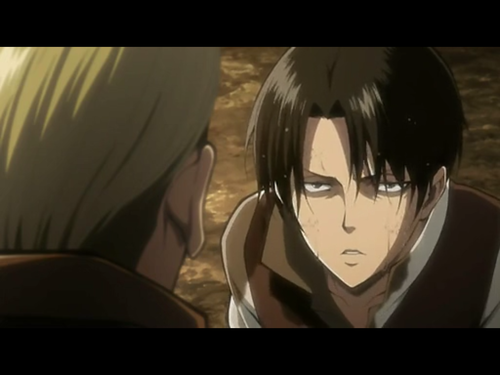 [sourceLink asin=””asin_jp=””bookwalker_id=””cdj_product_id=””text=”amazon.co.jp”url=”https://www.amazon.co.jp/dp/B09NV92L9B”]
[sourceLink asin=””asin_jp=””bookwalker_id=””cdj_product_id=””text=”amazon.co.jp”url=”https://www.amazon.co.jp/dp/B09NV92L9B”] 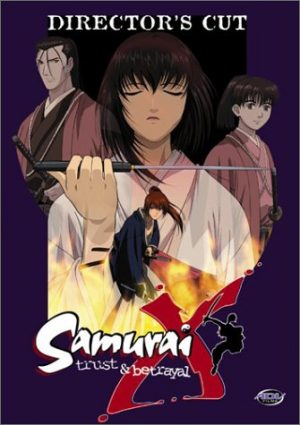 [sourceLink asin=””asin_jp=”B00008G8PP”bookwalker_id=””cdj_product_id=””text=””url=””] [Episoade informative=”4″difuzate=”din februarie 1999 până în septembrie 1999″post_id=””]
[sourceLink asin=””asin_jp=”B00008G8PP”bookwalker_id=””cdj_product_id=””text=””url=””] [Episoade informative=”4″difuzate=”din februarie 1999 până în septembrie 1999″post_id=””]  [sourceLink asin=””asin_jp=””bookwalker_id=””cdj_product_id=””text=”imdb”url=”https://www.imdb.com/title/tt0203082/mediaviewer/rm3908114432?ref_=ttmi_mi_all_pos_47″]
[sourceLink asin=””asin_jp=””bookwalker_id=””cdj_product_id=””text=”imdb”url=”https://www.imdb.com/title/tt0203082/mediaviewer/rm3908114432?ref_=ttmi_mi_all_pos_47″] 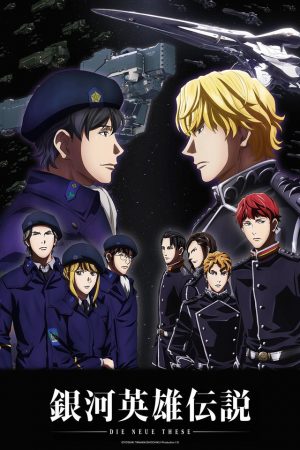 [sourceLink asin=””asin_jp=””bookwalker_id=””cdj_product_id=””text=”crunchyroll”url=”http://www.crunchyroll.com/legend-of-the-galactic-heroes-die-neue-these”] [Episoade informative=”110″difuzate=”din ianuarie 1988 până Martie 1997″post_id=””]
[sourceLink asin=””asin_jp=””bookwalker_id=””cdj_product_id=””text=”crunchyroll”url=”http://www.crunchyroll.com/legend-of-the-galactic-heroes-die-neue-these”] [Episoade informative=”110″difuzate=”din ianuarie 1988 până Martie 1997″post_id=””]  [sourceLink asin=””asin_jp=””bookwalker_id=””cdj_product_id=””text=”crunchyroll”url=”http://www.crunchyroll.com/legend-of-the-galactic-heroes-die-neue-these/episode-1-in-the-eternal-night-768377″]
[sourceLink asin=””asin_jp=””bookwalker_id=””cdj_product_id=””text=”crunchyroll”url=”http://www.crunchyroll.com/legend-of-the-galactic-heroes-die-neue-these/episode-1-in-the-eternal-night-768377″] 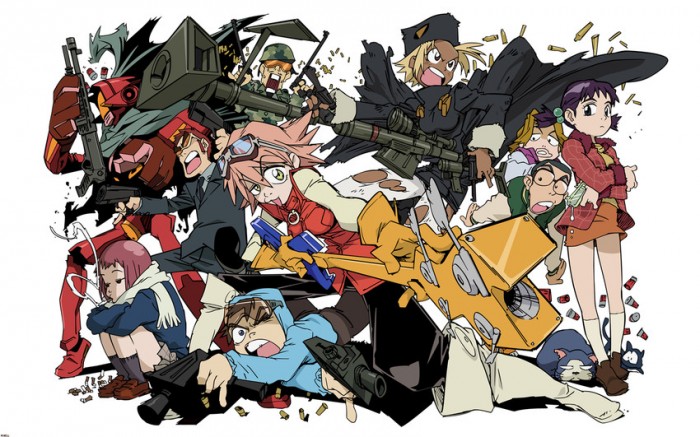
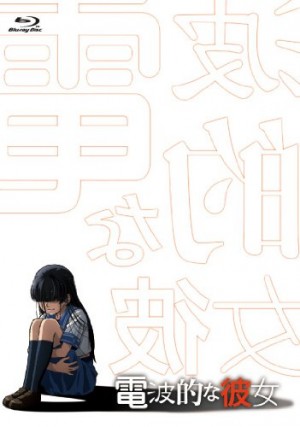 [Information episodes=”2″aired=”Feb 2009-Dec 2009″]
[Information episodes=”2″aired=”Feb 2009-Dec 2009″] 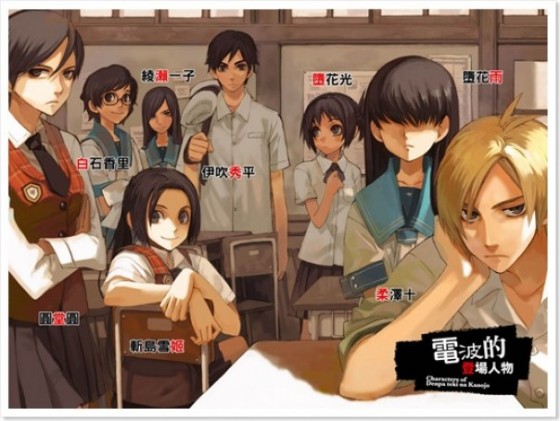
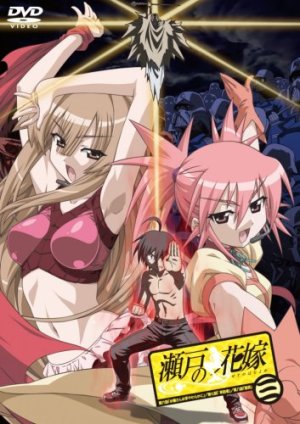 [Information episodes=”2″aired=”Nov 2008 – Jan 2009″]
[Information episodes=”2″aired=”Nov 2008 – Jan 2009″] 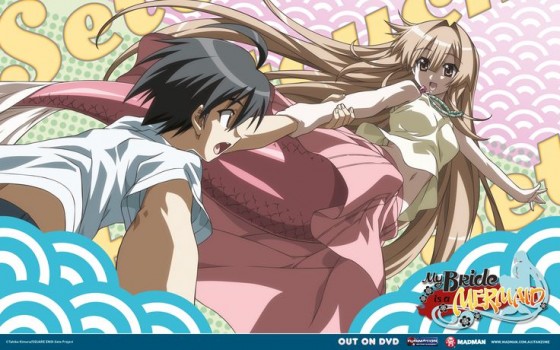
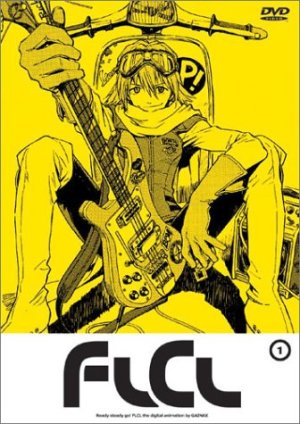 [Information episodes=”6″aired=”Apr 2000 – Mar 2001″]
[Information episodes=”6″aired=”Apr 2000 – Mar 2001″] 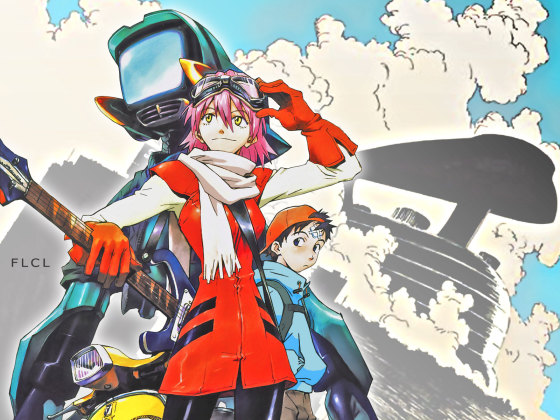
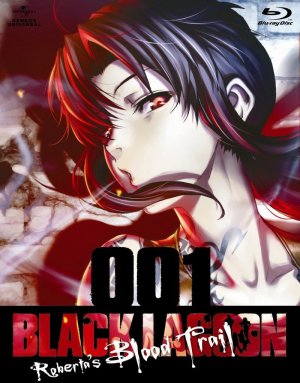 [Information episodes=”5″aired=”un 2010 – Jun 2011″]
[Information episodes=”5″aired=”un 2010 – Jun 2011″] 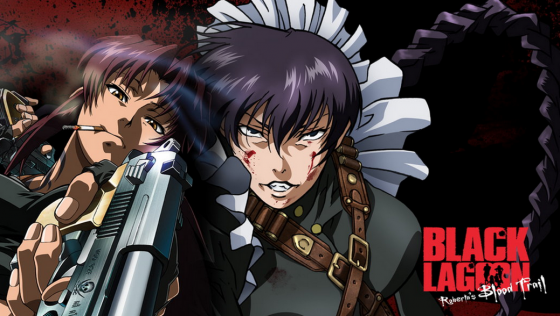
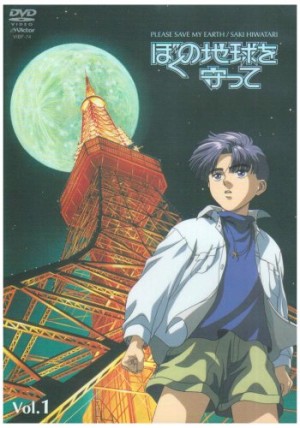 [Information episodes=”6″aired=”Dec 1993 – Sep 1994″]
[Information episodes=”6″aired=”Dec 1993 – Sep 1994″] 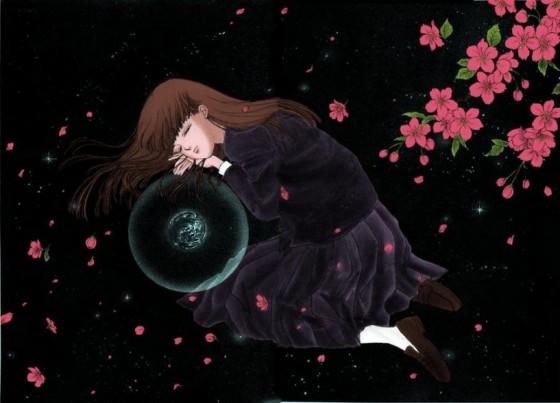
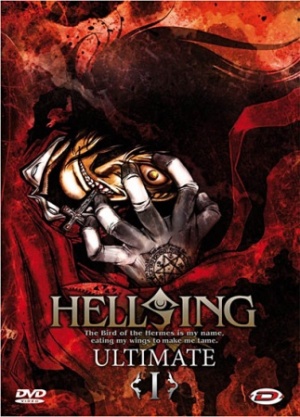 [Information episodes=”10″aired=”Feb 2006 – Dec 2012″]
[Information episodes=”10″aired=”Feb 2006 – Dec 2012″] 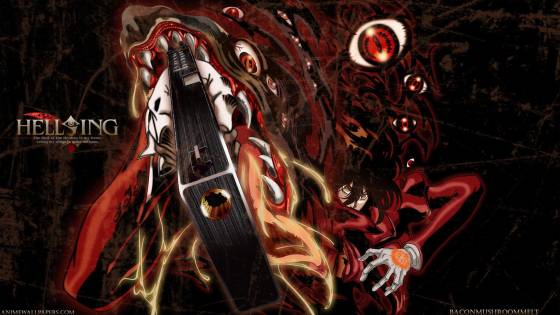
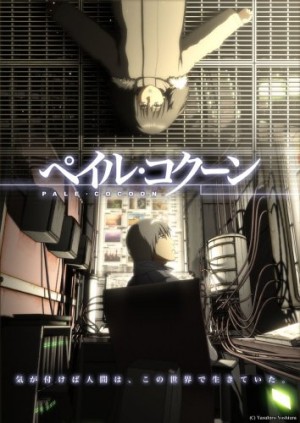 [Information episodes=”1″aired=”Dec 2005″]
[Information episodes=”1″aired=”Dec 2005″] 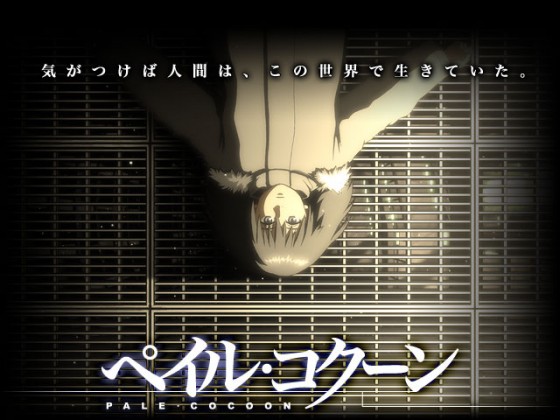
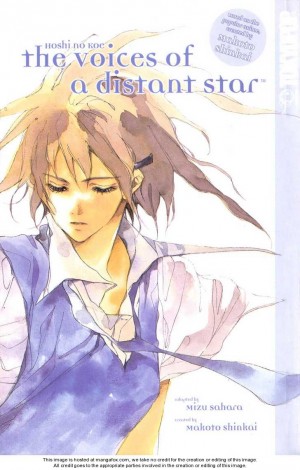 [Information episodes=”1″aired=”Feb 2002″]
[Information episodes=”1″aired=”Feb 2002″] 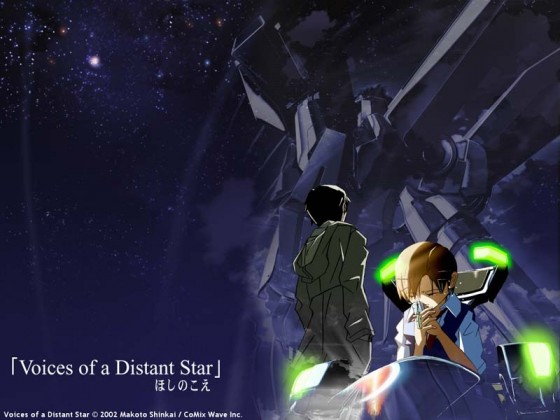
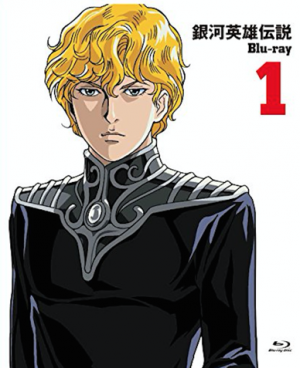 [Information episodes=”110″aired=”Jan 1988 – Mar 1997″]
[Information episodes=”110″aired=”Jan 1988 – Mar 1997″] 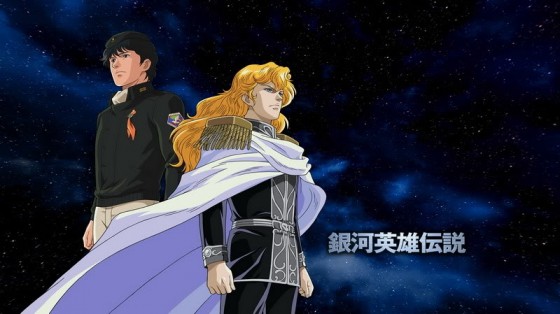
 [Information episodes=”4″aired=”Feb 1999 – Sept 1999″]
[Information episodes=”4″aired=”Feb 1999 – Sept 1999″] 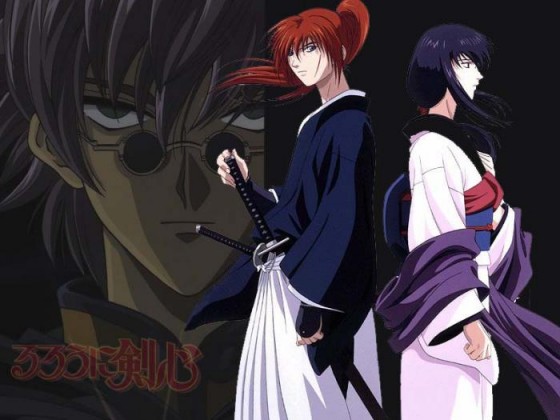
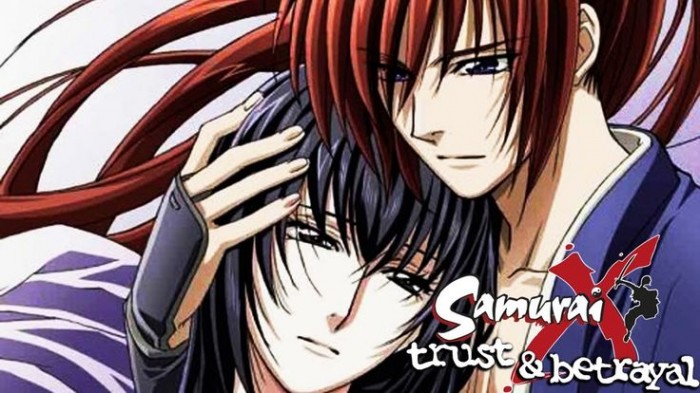
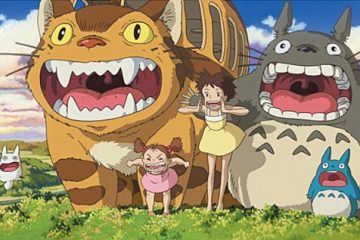
 [ad_top1 class=””]
[ad_top1 class=””]  [sourceLink asin=””asin_jp=””bookwalker_id=””cdj_product_id=””text=”twitter”url=”https://twitter.com/studio_chizu/status/1413422681102315529?s=20&t=mV3HuGCNCh4Y9iAS1nZEVQ”]
[sourceLink asin=””asin_jp=””bookwalker_id=””cdj_product_id=””text=”twitter”url=”https://twitter.com/studio_chizu/status/1413422681102315529?s=20&t=mV3HuGCNCh4Y9iAS1nZEVQ”]  [sourceLink asin=””asin_jp=””bookwalker_id=””cdj_product_id=””text=”imdb”url=”https://www.imdb.com/name/nm2210720/mediaviewer/rm1539527168?ref_=nm_ov_ph”] [information_general item1=”Opere notabile”content1=”K-On!, A Silent Voice, Sound! Euphonium, Tamako Market”post_id=””]
[sourceLink asin=””asin_jp=””bookwalker_id=””cdj_product_id=””text=”imdb”url=”https://www.imdb.com/name/nm2210720/mediaviewer/rm1539527168?ref_=nm_ov_ph”] [information_general item1=”Opere notabile”content1=”K-On!, A Silent Voice, Sound! Euphonium, Tamako Market”post_id=””]  [sourceLink asin=””asin_jp=””cdj_product_id=””text=”sentai”url=””]
[sourceLink asin=””asin_jp=””cdj_product_id=””text=”sentai”url=””]  [sourceLink asin=””asin_jp=”B01LZMX2IO”cdj_product_id=””text=””url=””]
[sourceLink asin=””asin_jp=”B01LZMX2IO”cdj_product_id=””text=””url=””]  [sourceLink asin=””asin_jp=””bookwalker_id=””cdj_product_id=””text=”twitter”url=”https://twitter.com/ttr1976/status/1549079631893897217?s=20&t=wcRBWJH5PGapxayRBJH5PGapx ] [information_general item1=”Notă ble Works”content1=”Attack On Titan, Highschool of the dead, Death Note, Kabaneri of the Iron Fortress, Black Lagoon”post_id=””]
[sourceLink asin=””asin_jp=””bookwalker_id=””cdj_product_id=””text=”twitter”url=”https://twitter.com/ttr1976/status/1549079631893897217?s=20&t=wcRBWJH5PGapxayRBJH5PGapx ] [information_general item1=”Notă ble Works”content1=”Attack On Titan, Highschool of the dead, Death Note, Kabaneri of the Iron Fortress, Black Lagoon”post_id=””]  [sourceLink asin=””asin_jp=”B06XT226DZ”cdj_product_id=””text=””url=””]
[sourceLink asin=””asin_jp=”B06XT226DZ”cdj_product_id=””text=””url=””]  [sourceLink asin=”B008YRL7JE”asind_jp=”product”_cd_jp=”””text=””url=””]
[sourceLink asin=”B008YRL7JE”asind_jp=”product”_cd_jp=”””text=””url=””]  [sourceLink asin=””asin_jp=””bookwalker_id=””cdj_product_id=””text=”imdb”url=”https://www.imdb.com/name/nm1396121/?ref_=fn_al_nm_1″] [informații n_general item1=”Lucrări notabile”content1=”Numele tău., Weathering with you, Grădina cuvintelor, 5 centimetri pe secundă”post_id=””]
[sourceLink asin=””asin_jp=””bookwalker_id=””cdj_product_id=””text=”imdb”url=”https://www.imdb.com/name/nm1396121/?ref_=fn_al_nm_1″] [informații n_general item1=”Lucrări notabile”content1=”Numele tău., Weathering with you, Grădina cuvintelor, 5 centimetri pe secundă”post_id=””]  [sourceLink asin=””asin_jp=””cdj_product_id=”TBR-27261D”text=””url=””]
[sourceLink asin=””asin_jp=””cdj_product_id=”TBR-27261D”text=””url=””]  [sourceLink asin=””asin_jp=”B00423BIRA”cdj_product_id=””text=””url=””]
[sourceLink asin=””asin_jp=”B00423BIRA”cdj_product_id=””text=””url=””]  [sourceLink asin=””asin_jp=””bookwalker_id=””cdj_product_id=””text=”imdb”url=”https://www.imdb.com/name/nm0030417/mediaviewer/rm991175168?ref_=nm_ov_ph”] [informații_ite general m1=”Notable Works”content1=”Neon Genesis Evangelion: The End of Evangelion, Evangelion: 1.0: You Are (Not) Alone”post_id=””]
[sourceLink asin=””asin_jp=””bookwalker_id=””cdj_product_id=””text=”imdb”url=”https://www.imdb.com/name/nm0030417/mediaviewer/rm991175168?ref_=nm_ov_ph”] [informații_ite general m1=”Notable Works”content1=”Neon Genesis Evangelion: The End of Evangelion, Evangelion: 1.0: You Are (Not) Alone”post_id=””]  [sourceLink asin=”B000244FRS”asin_jp=””cdj_product_id=””text=””url=””]
[sourceLink asin=”B000244FRS”asin_jp=””cdj_product_id=””text=””url=””]  [sourceLink asin=”B002KYIAJ2″asin_jp=””cdj_product_id=””text=””url=””]
[sourceLink asin=”B002KYIAJ2″asin_jp=””cdj_product_id=””text=””url=””]  [sourceLink asin=””asin_jp=””bookwalker_id=””cdj_product_id=””text=”imdb”url=”https://www.imdb.com/name/nm0913860/mediaviewer/rm3904790272?ref_=nm_ov_ph”] [information_general item1=”Notable Works”content1=”Cowboy Bebop, The Animatrix, Blade Runner Black Out 2022, Samurai Champloo”post_id=””]
[sourceLink asin=””asin_jp=””bookwalker_id=””cdj_product_id=””text=”imdb”url=”https://www.imdb.com/name/nm0913860/mediaviewer/rm3904790272?ref_=nm_ov_ph”] [information_general item1=”Notable Works”content1=”Cowboy Bebop, The Animatrix, Blade Runner Black Out 2022, Samurai Champloo”post_id=””]  [sourceLink asin=”6305789312″asin_jp=””cdj_product_id=””text=””url=””]
[sourceLink asin=”6305789312″asin_jp=””cdj_product_id=””text=””url=””]  [sourceLink asin=”B000AC7OP2″asin_jp=””cdj_product_id=””text=””url=””] [ad_middle class=”mt40 mb40″]
[sourceLink asin=”B000AC7OP2″asin_jp=””cdj_product_id=””text=””url=””] [ad_middle class=”mt40 mb40″]  [sourceLink asin=””asin_jp=””bookwalker_id=””cdj_product_id=””text=”imdb”url=”https://www.imdb.com/name/nm1482702/mediaviewer/rm3551482624?ref_=nm_ov_ph”] [informatio n_general item1=”Notable Works”content1=”Tatami Galaxy, DevilMan Crybaby, Pingpong: The Animation”post_id=””]
[sourceLink asin=””asin_jp=””bookwalker_id=””cdj_product_id=””text=”imdb”url=”https://www.imdb.com/name/nm1482702/mediaviewer/rm3551482624?ref_=nm_ov_ph”] [informatio n_general item1=”Notable Works”content1=”Tatami Galaxy, DevilMan Crybaby, Pingpong: The Animation”post_id=””]  [sourceLink asin=”B00J5S09OK”asin_jp=””cdj_product_id=””text=””url=””]
[sourceLink asin=”B00J5S09OK”asin_jp=””cdj_product_id=””text=””url=””]  [sourceLink asin=””asin_jp=””cdj_product_id=”ANZX-14231″text=””url=””]
[sourceLink asin=””asin_jp=””cdj_product_id=”ANZX-14231″text=””url=””]  [sourceLink asin=””asin_jp=””bookwalker_id=””cdj_product_id=””text=””url=”https://www.imdb.com/name/nm0464804/mediaviewer/rm3697617408?ref_=nmmi_mi_all_pbl_1″] [information_ general item1=”Notable Works”content1=”Perfect Blue, Paprika, Tokyo Godfathers, Millennium Actress”post_id=””]
[sourceLink asin=””asin_jp=””bookwalker_id=””cdj_product_id=””text=””url=”https://www.imdb.com/name/nm0464804/mediaviewer/rm3697617408?ref_=nmmi_mi_all_pbl_1″] [information_ general item1=”Notable Works”content1=”Perfect Blue, Paprika, Tokyo Godfathers, Millennium Actress”post_id=””]  [sourceLink asin=””asin_jp=””cdj_product_id=””text=”imdb”url=”https://www.imdb.com/title/tt0156887/mediaviewer/rm1887136512?ref_=ttmi_mi_all_pos_10″]
[sourceLink asin=””asin_jp=””cdj_product_id=””text=”imdb”url=”https://www.imdb.com/title/tt0156887/mediaviewer/rm1887136512?ref_=ttmi_mi_all_pos_10″]  [sourceLink asin=”B0001EFTVA”asin_jp=””cdj_product_id=””text=””url=””]
[sourceLink asin=”B0001EFTVA”asin_jp=””cdj_product_id=””text=””url=””]  [sourceLink asin=””asin_jp=””bookwalker_id=””cdj_product_id=””text=””url=”https://www.imdb.com/name/nm0396074/mediaviewer/rm1836143616?ref_=nm_ov_ph”] [information_general item1=”Notable Works”content1=”The Girl Who Leapt Through Time, Summer Wars, Wolf Children, One Piece films”post_id=””]
[sourceLink asin=””asin_jp=””bookwalker_id=””cdj_product_id=””text=””url=”https://www.imdb.com/name/nm0396074/mediaviewer/rm1836143616?ref_=nm_ov_ph”] [information_general item1=”Notable Works”content1=”The Girl Who Leapt Through Time, Summer Wars, Wolf Children, One Piece films”post_id=””]  [sourceLink asin=””asin_jp=””cdj_product_id=”KABA-2401″text=””url=””]
[sourceLink asin=””asin_jp=””cdj_product_id=”KABA-2401″text=””url=””]  [sourceLink asin=””asin_jp=””cdj_product_id=”VPBT-14443″text=””url=””]
[sourceLink asin=””asin_jp=””cdj_product_id=”VPBT-14443″text=””url=””]  [sourceLink asin=””asin_jp=””bookwalker_id=””cdj_product_id=””text=””url=”https://www.imdb.com/name/nm0960028/mediaviewer/rm1412838656?ref_=nm_ov_ph”] [information_general item1=”Notable Wo rks”content1=”Akira, Steamboy”post_id=””]
[sourceLink asin=””asin_jp=””bookwalker_id=””cdj_product_id=””text=””url=”https://www.imdb.com/name/nm0960028/mediaviewer/rm1412838656?ref_=nm_ov_ph”] [information_general item1=”Notable Wo rks”content1=”Akira, Steamboy”post_id=””]  [sourceLink asin=””asin_jp=””cdj_product_id=”PIBA-1268″text=””url=””]
[sourceLink asin=””asin_jp=””cdj_product_id=”PIBA-1268″text=””url=””]  [sourceLink asin=””asin_jp=””cdj_product_id=”BCBA-2145″text=””url=””]
[sourceLink asin=””asin_jp=””cdj_product_id=”BCBA-2145″text=””url=””]  [sourceLink asin=””asin_jp=””bookwalker_id=””cdj_product_id=””text=””url=”https://www.imdb.com/title/tt12221602/mediaviewer/rm2062070017/?ref_=tt_ov_i”] [information_general item1=”Notable Works”content1=”Sp irited Away, Castle in the Sky, The Wind Rises, My Neighbour Totoro”post_id=””]
[sourceLink asin=””asin_jp=””bookwalker_id=””cdj_product_id=””text=””url=”https://www.imdb.com/title/tt12221602/mediaviewer/rm2062070017/?ref_=tt_ov_i”] [information_general item1=”Notable Works”content1=”Sp irited Away, Castle in the Sky, The Wind Rises, My Neighbour Totoro”post_id=””]  [sourceLink asin=””asin_jp=””cdj_product_id=”NEOBK-1916005″text=””url=””]
[sourceLink asin=””asin_jp=””cdj_product_id=”NEOBK-1916005″text=””url=””]  [sourceLink asin=”B00MHT49TK”asin_jp=””cdj_product_id=””text=””url=””]
[sourceLink asin=”B00MHT49TK”asin_jp=””cdj_product_id=””text=””url=””]  [sourceLink asin=””asin_jp=”B008AGZQW8″cdj_product_id=””text=””url=””]
[sourceLink asin=””asin_jp=”B008AGZQW8″cdj_product_id=””text=””url=””]  [sourceLink url=”http://www.pixiv.net/member_illust.php?mode=medium&illust_id=39382950″ a_text=”Yoshiyuki Tomino Anime Fan Art”]
[sourceLink url=”http://www.pixiv.net/member_illust.php?mode=medium&illust_id=39382950″ a_text=”Yoshiyuki Tomino Anime Fan Art”]  ‘]
‘]  ‘anime=’
‘anime=’ ‘]
‘]  ‘]
‘]  ‘anime=’
‘anime=’ ‘]
‘]  ‘]
‘]  ‘anime=’
‘anime=’ ‘]
‘]  ‘]
‘]  ‘anime=’
‘anime=’ ‘]
‘]  ‘anime=’
‘anime=’ ‘]
‘]  ‘]
‘]  ‘anime=’
‘anime=’ ‘]
‘]  ‘]
‘]  ‘anime=’
‘anime=’ ‘]
‘]  ‘]
‘]  ‘anime=’
‘anime=’ ‘]
‘]  ‘]
‘]  ‘anime=’
‘anime=’ ‘]
‘]  ‘]
‘]  ‘anime=’
‘anime=’ ‘]
‘]  [sourceLink url=”http://www.pixiv.net/member_illust.php?mode=medium&illust_id=31271293″ a_text=”Hayao Miyazaki Anime Fan Art”]
[sourceLink url=”http://www.pixiv.net/member_illust.php?mode=medium&illust_id=31271293″ a_text=”Hayao Miyazaki Anime Fan Art”] 
 [sourceLink asin=”1427873224″asin_jp=””cdj_product_id=””text=””url=””] Menținerea demnității și suveranității până la capăt Scriitorilor: Denys Fadieiev, Ruslan Samaryk și Bohdana Vitkovska Artiști: Oleksandr Koreshkov, Kateryna Kosheleva, Yevhenii Tonchylov, Volodymyr Povoroznyk, Ihor Kurilin, Maksym Bohdanovskyi, Bohdana Vitkovska, Nazarre Malstrong, Nazar Povoroznyk >: Biografie, Istoric, Război Editura: Tokyopop Data publicării: august 2022
[sourceLink asin=”1427873224″asin_jp=””cdj_product_id=””text=””url=””] Menținerea demnității și suveranității până la capăt Scriitorilor: Denys Fadieiev, Ruslan Samaryk și Bohdana Vitkovska Artiști: Oleksandr Koreshkov, Kateryna Kosheleva, Yevhenii Tonchylov, Volodymyr Povoroznyk, Ihor Kurilin, Maksym Bohdanovskyi, Bohdana Vitkovska, Nazarre Malstrong, Nazar Povoroznyk >: Biografie, Istoric, Război Editura: Tokyopop Data publicării: august 2022 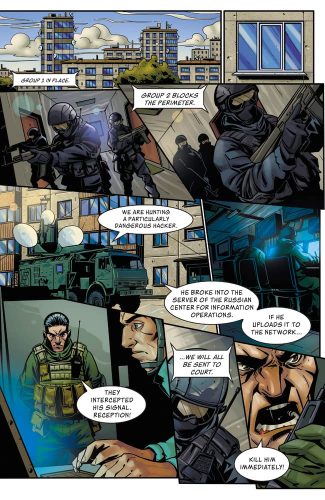 [sourceLink asin=”1427873224″asin_jp=””cdj_product_id=””text=””url=””]
[sourceLink asin=”1427873224″asin_jp=””cdj_product_id=””text=””url=””] 
 [ad_top1 class=””]
[ad_top1 class=””] 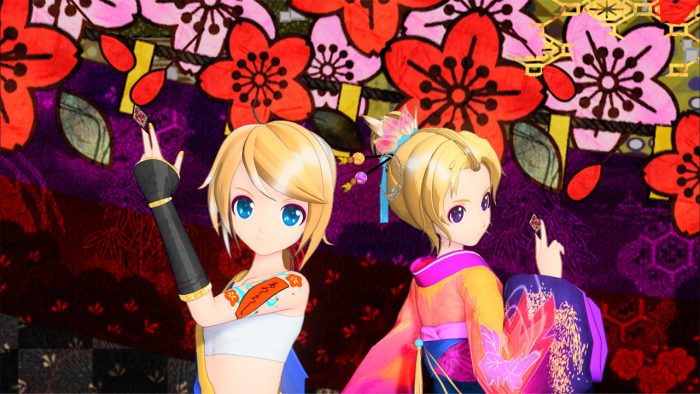 [sourceLink asin=””asin_jp=””cdj_product_id=””text=”twitter”url=”https://twitter.com/pjd_sega/status/1562605679860260871?s=20&t=7Tq2zXUBJJ_MnUgjSK3xiQ”] „Tones of Future Past”
[sourceLink asin=””asin_jp=””cdj_product_id=””text=”twitter”url=”https://twitter.com/pjd_sega/status/1562605679860260871?s=20&t=7Tq2zXUBJJ_MnUgjSK3xiQ”] „Tones of Future Past”  [sourceLink asin=””asin_jp=””cdj_product_id=””text=”Hatsune Miku Project Diva MegaMix DLC Bundle 3/MegaMix+ Extra Song Pack”url=””]
[sourceLink asin=””asin_jp=””cdj_product_id=””text=”Hatsune Miku Project Diva MegaMix DLC Bundle 3/MegaMix+ Extra Song Pack”url=””] 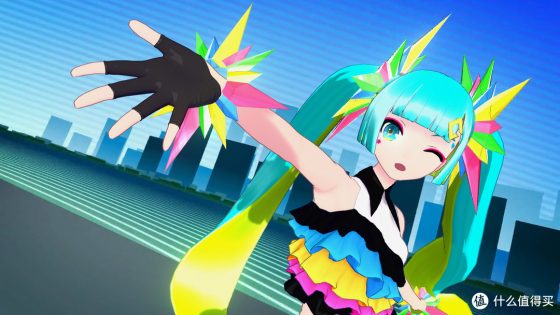 [sourceLink asin=””asin_jp=””cdj_product_id=””text=”Hatsune Miku Project Diva MegaMix DLC Bundle 3/MegaMix+ Extra Song Pack”url=””]
[sourceLink asin=””asin_jp=””cdj_product_id=””text=”Hatsune Miku Project Diva MegaMix DLC Bundle 3/MegaMix+ Extra Song Pack”url=””]